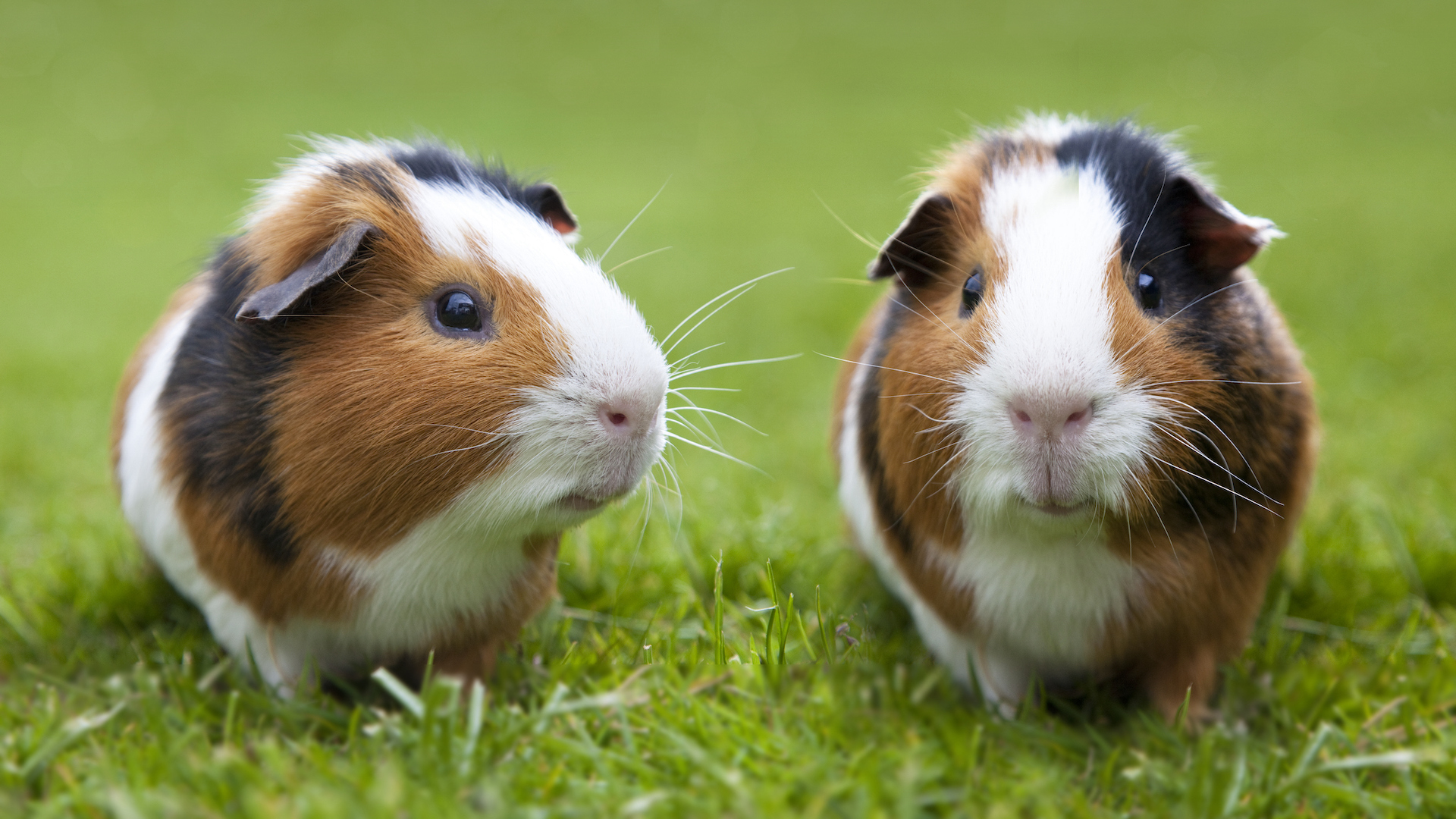
These top tips for taking care of guinea pigs are sure to help your furry little friend thrive. Guinea pigs – or cavies, as they are often called – are the sweetest little creatures. They make delightful pets, being non-aggressive, happy being handled, and capable of an adorably affectionate noise in greeting, known as “chutting”.
As pets go, guinea pigs are fairly low-maintenance although they will enjoy having some of the best guinea pig accessories around. But just because they don’t require extensive grooming or long daily walks doesn’t mean you can ignore them. No, this is an animal that thrives on attention. Eminently sociable – both with their own kind and with humans – they will give back as much as you give them.
They are great pets for beginners and children, but like all animals, they do require special care and have needs that are exclusive to guinea pigs.
Let’s take a look at some of the ways you can ensure your guinea pig lives its best possible life.
32 tips for taking care of guinea pigs
1. Prepare before you buy
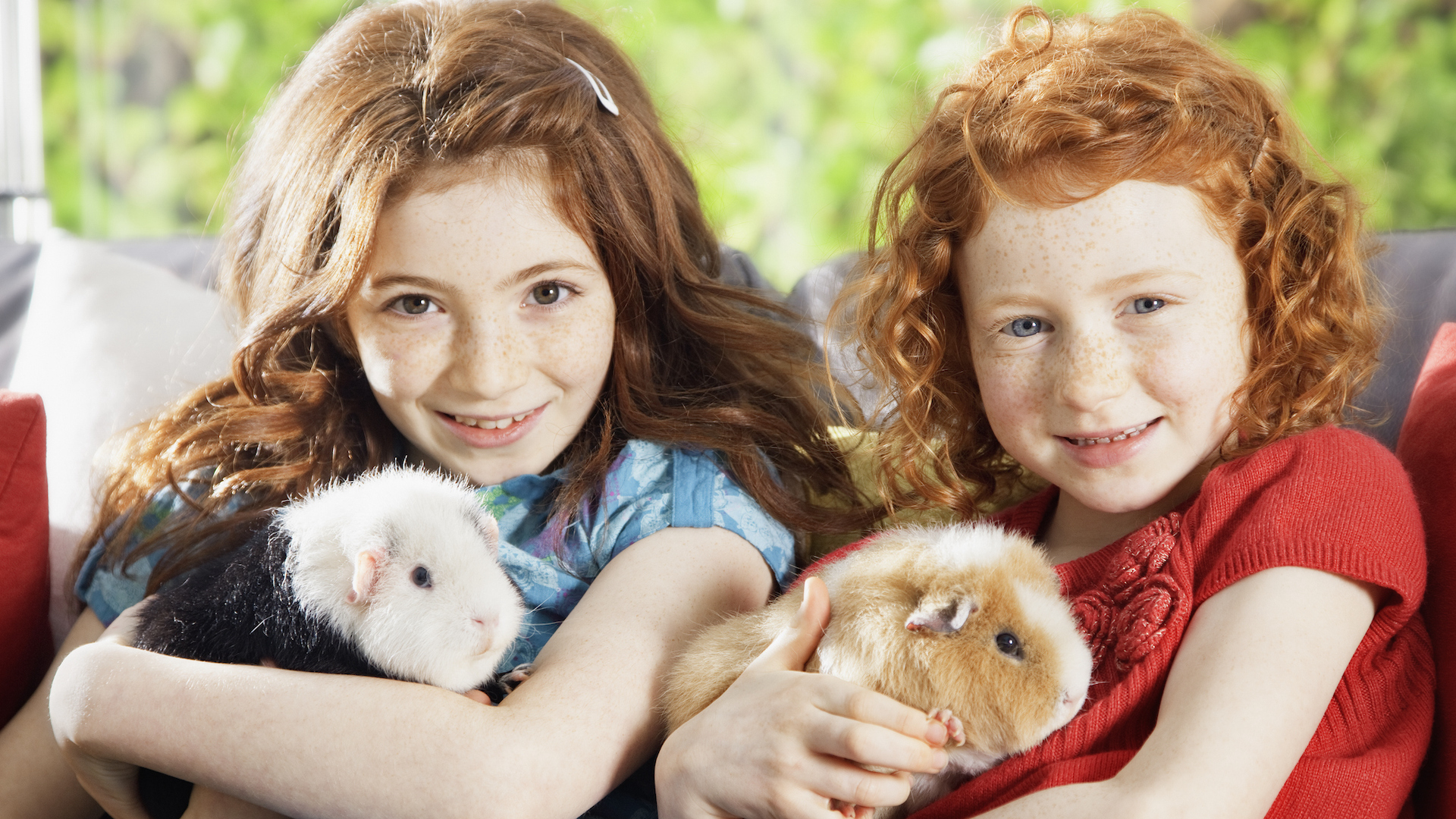
Guinea pigs may look adorable and seem like easy pets to have around, but they should never be an impulse buy There. are things to know before you adopt a guinea pig. Do your research, be honest with yourself about whether you really have the time for this responsibility, and thoroughly equip your home with everything a guinea pig needs and deserves.
2. Provide shelter
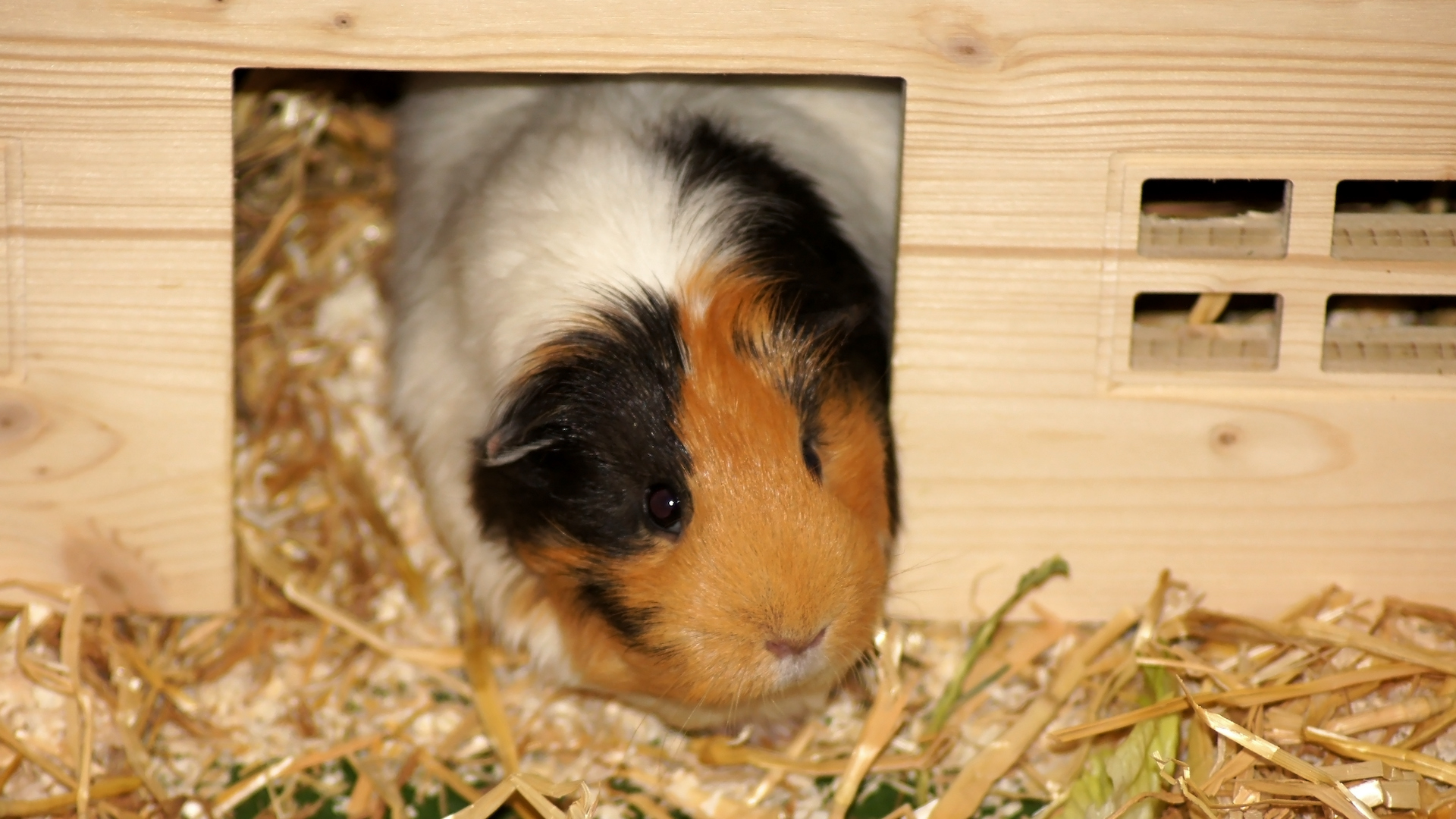
Guinea pigs need a fully enclosed area where they can hide and sleep. It should provide protection from cold, damp, sunlight, and extremes of temperature, as well as from any predators. Hutches tend to be on the small side – their main living area should be at least 10 square feet and include some of the best bedding for guinea pigs.
As well as somewhere to sleep, guinea pigs enjoy tunnels in their run, both as an emergency safe enclosed space and also for fun play.
3. Allow space for exercise
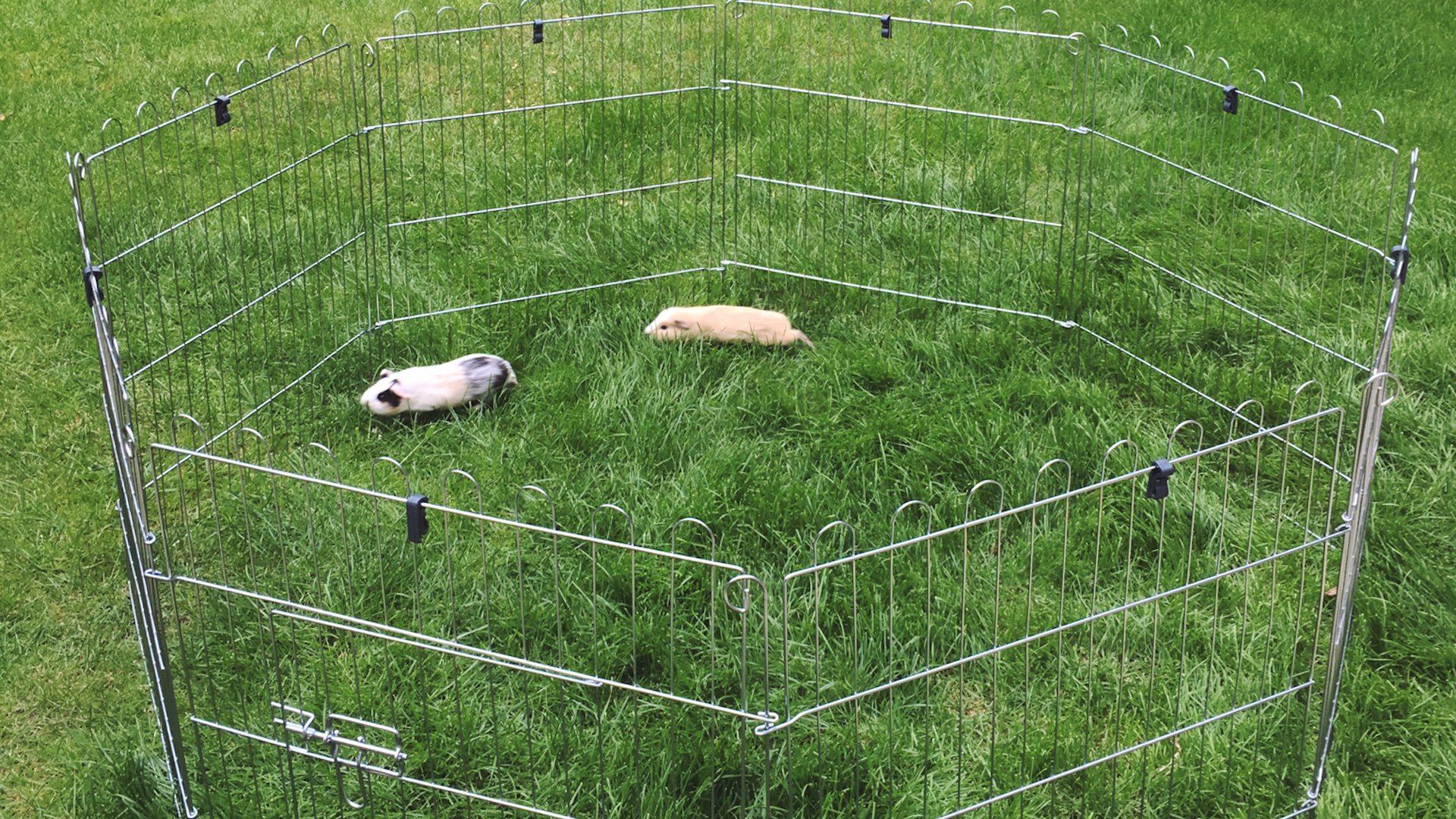
Cavies need plenty of space to run around and explore. They should have access to an outside run which is at least 24 square feet, whether this is inside or outside. If it’s not cold and damp, they enjoy grazing on grass.
Make sure there are no escape holes in their enclosure. Although they themselves aren’t jumpers and climbers, it should be enclosed on the top to prevent other animals getting in.
4. A prey species
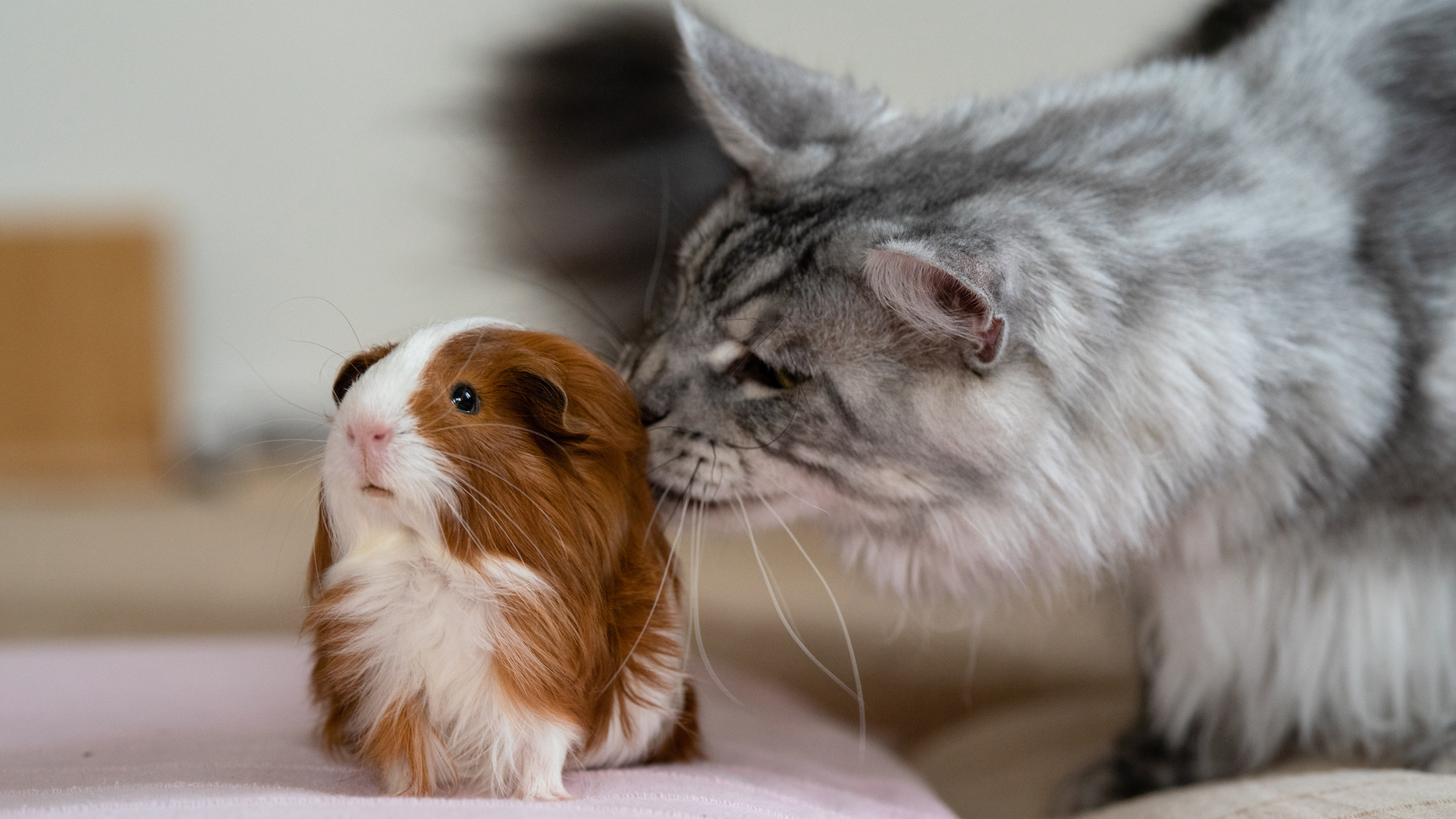
Guinea pigs are a prey animal, and as such they tend to mask any illness or weakness because it makes them even more vulnerable. This is part of their natural survival instinct, but bear in mind that if a guinea pig does look sick, urgent veterinary attention is required because they’ll try their level best to look healthy until they just can’t.
Check them every day and keep an eye on their food and water intake, as well as their droppings to know if anything irregular is going on. A vet will help you know what to do when your guinea pig is sick.
5. Keep them in pairs or more
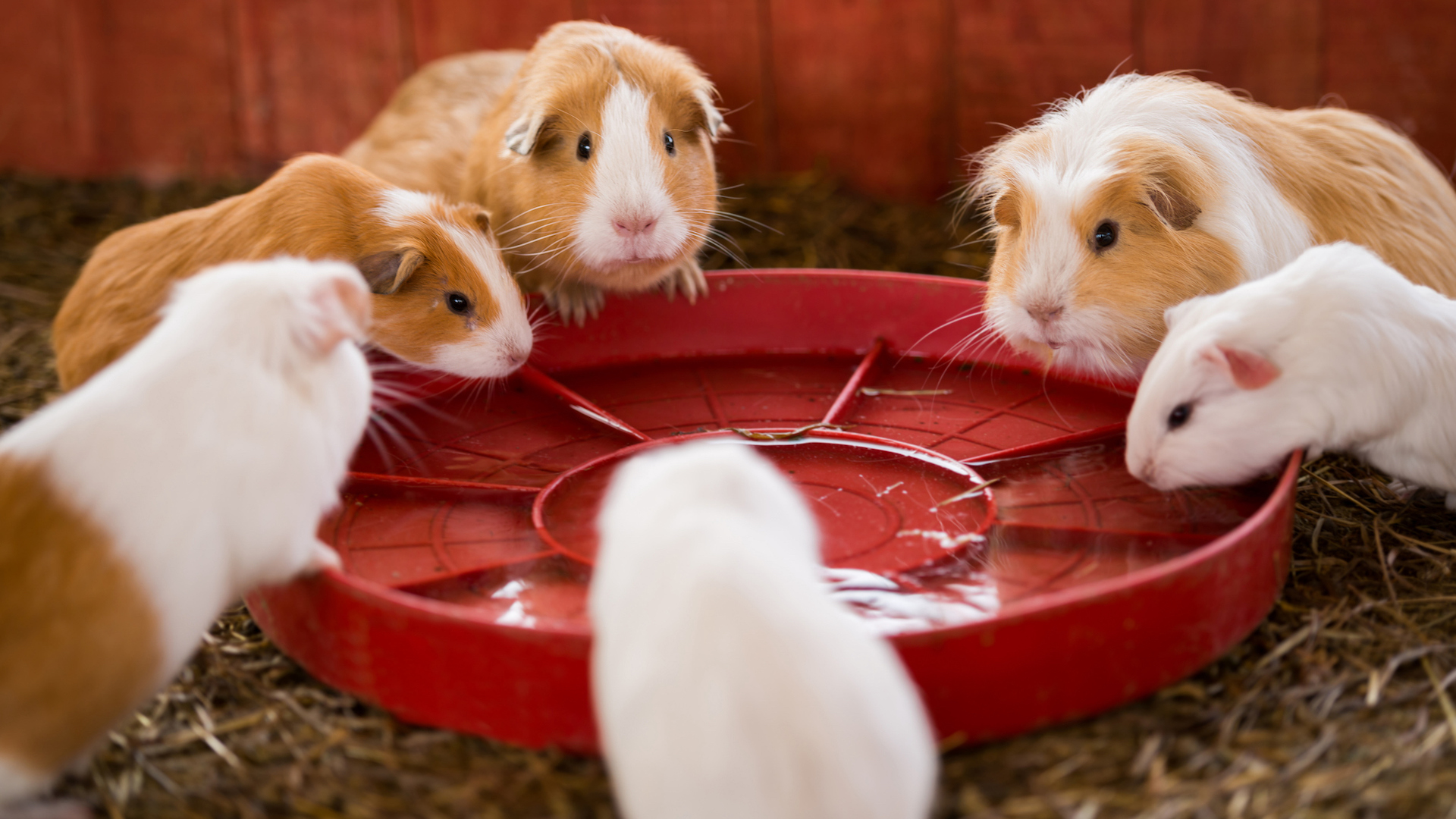
Guinea pigs are communal animals which means they should not be kept alone. Neutered females and males or female pairs work well, though male pairs can get along if they have been together since birth. A trio of males tends to be a bad idea.
And just like people, you can’t force guinea pigs to be friends. You need to spend time and effort helping them to get to know each other when introducing them as adults.
6. Herbivore diet
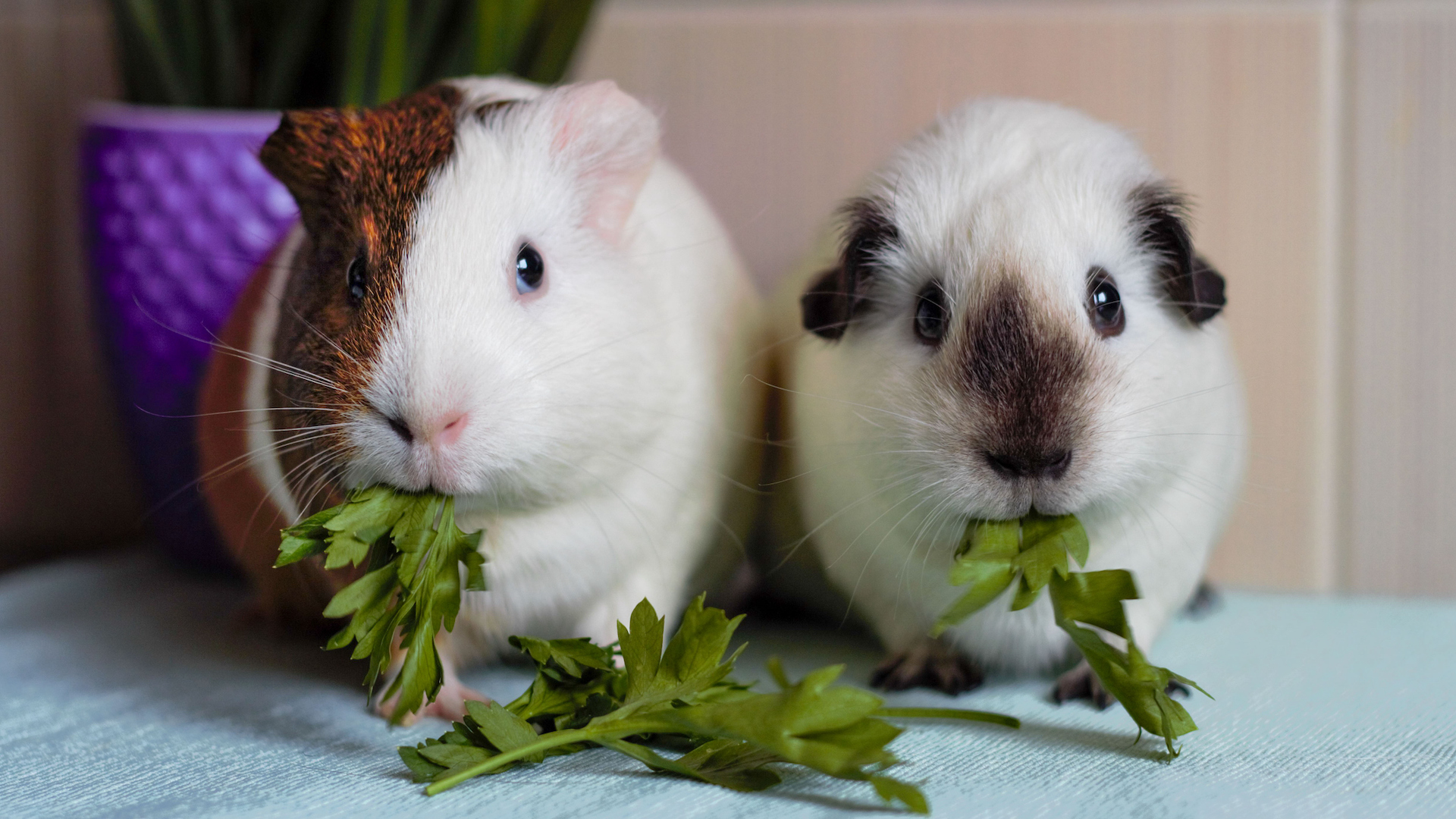
Guinea pigs should only eat plant material; hay or grass should be their main source of forage. If they aren’t used to grass because they have been kept indoors, introduce it gradually. They also need fresh greens, around a cupful a day – such as parsley and dandelion leaves. I
If you wondered "Can guinea pigs eat apples?" You'll be happy to know that small amounts of some fruits and other vegetables can be given in moderation and will boost their vitamin C.
7. Digestive needs
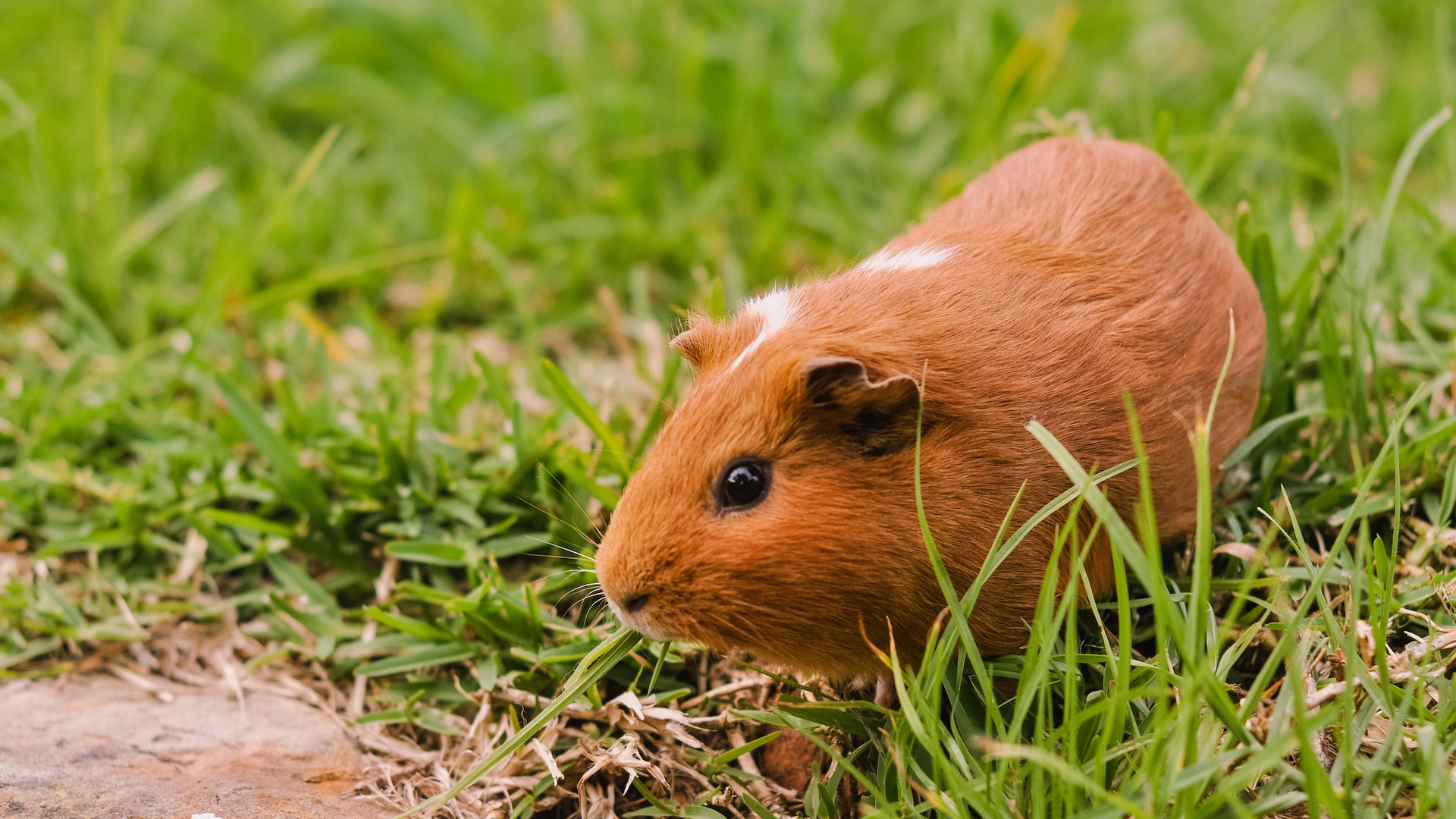
What do guinea pigs eat? Good question. Guinea pigs require a high-fiber diet, mainly consisting of grass or hay, around 80%. Commercial food should be a supplement rather than the bulk of the diet. Timothy hay pellets – in small quantities – are recommended as they mirror their natural forage diet. Conversely, the muesli mixes typically don’t meet a cavy’s digestive needs, particularly as they tend to pick and choose the morsels they like the most, discarding the others. This can lead to obesity and digestive upset.
They have a high metabolic rate, so need to graze almost constantly with ad-lib hay.
8. Dental requirements
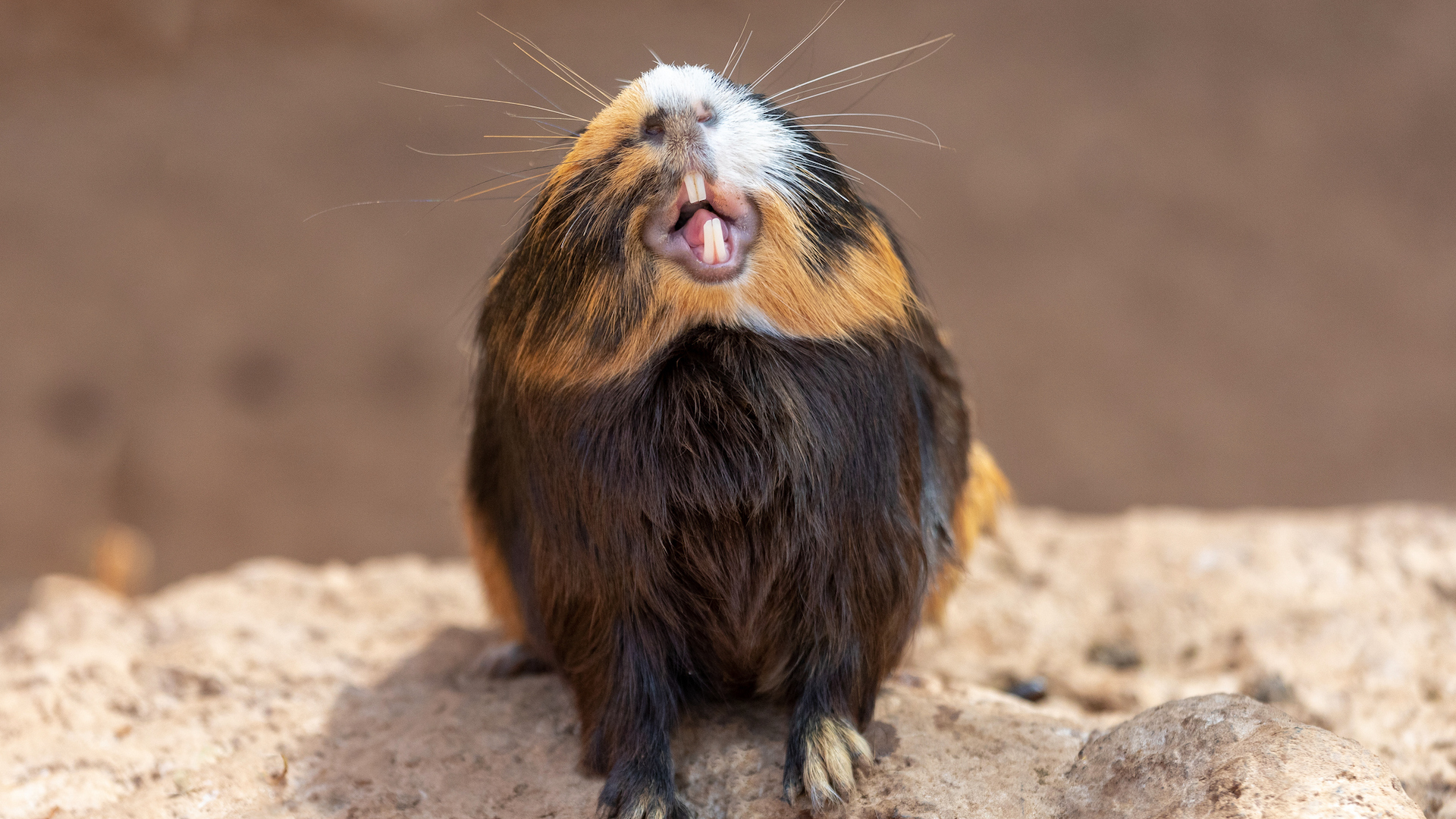
For good dental health, a guinea pig needs both hay and vitamin C. A major cause of dental disease in cavies is insufficient fiber in their diet. Because they are designed to chew all day, their teeth grow throughout their life. If they are not worn down grinding on the long strands of hay, their cheek teeth can cause discomfort and abscesses.
A lack of vitamin C can cause scurvy, which can lead to dental disease and problems with loose teeth.
9. Provide enrichment
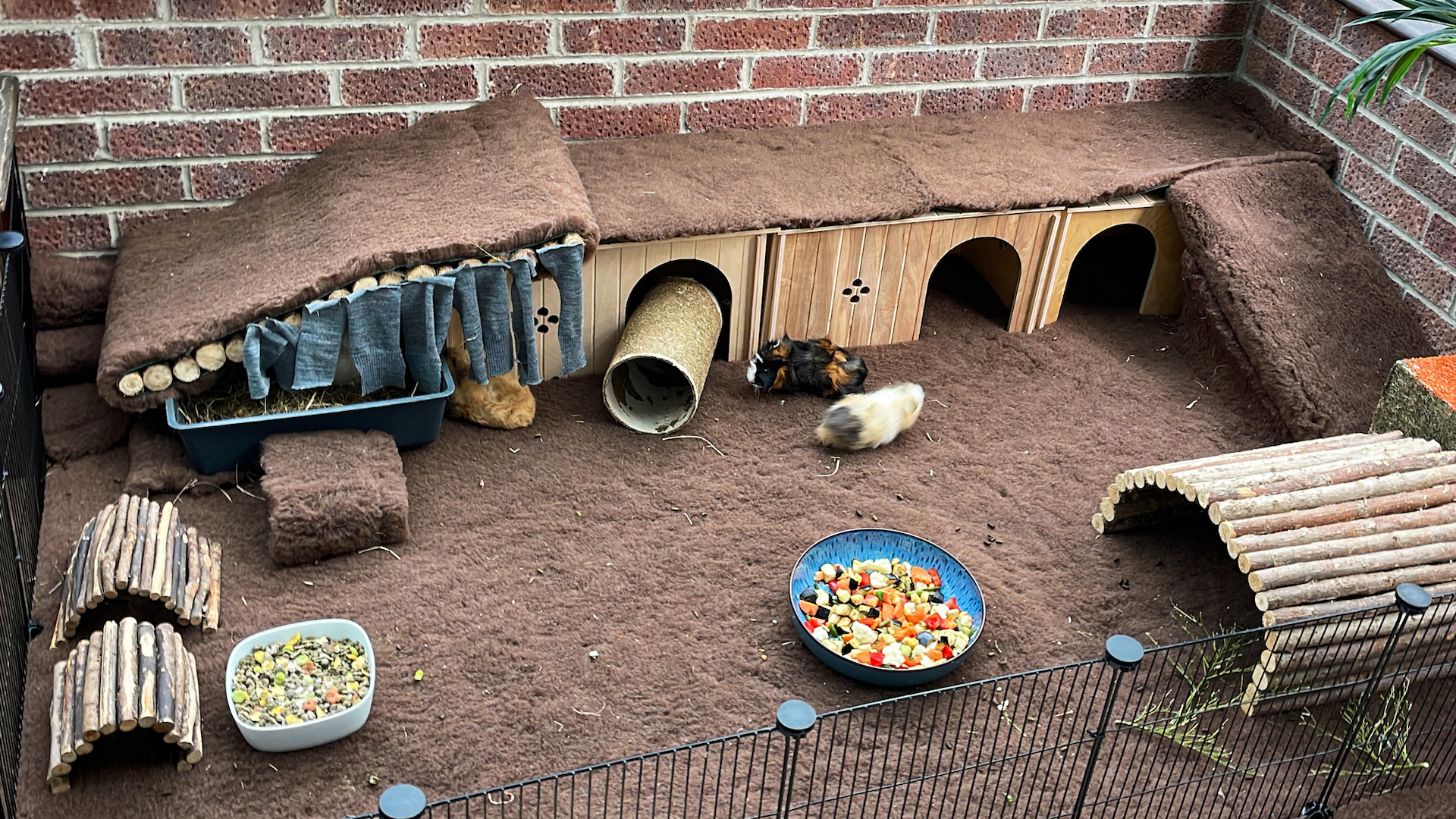
Guinea pigs thrive on enrichment to keep them happy and healthy. It’s good practice to rotate their toys so they have new places to explore and hide in. They are inquisitive creatures and find it fun to check out novelties in their space.
Toys they tend to enjoy are hideaways, tunnels, and boxes with holes – but they don’t need a wheel like hamsters, these might even cause harm.
Although guinea pigs do need their own kind for companionship, they typically enjoy human company too. Some patient cavy owners even manage to teach them a few commands!
10. Be aware of household hazards
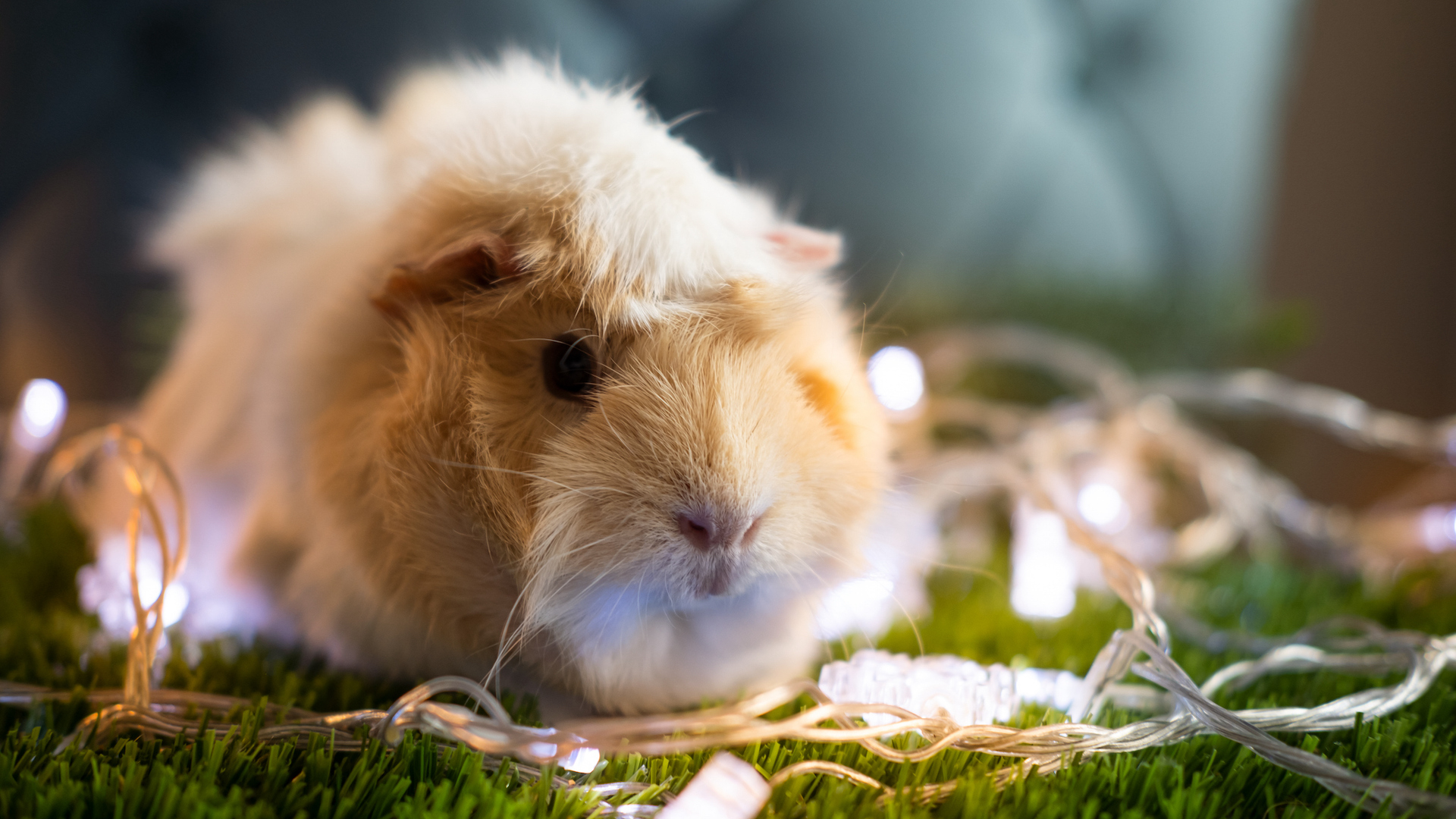
Always provide a safe home for your guinea pig. Their hutch and run should be escape-proof and predator-proof. They love to chew, so electric cables need to be well out of reach.
And be aware that many common plants and foods are poisonous – for example, tulips and potatoes.
11. Gentle handling
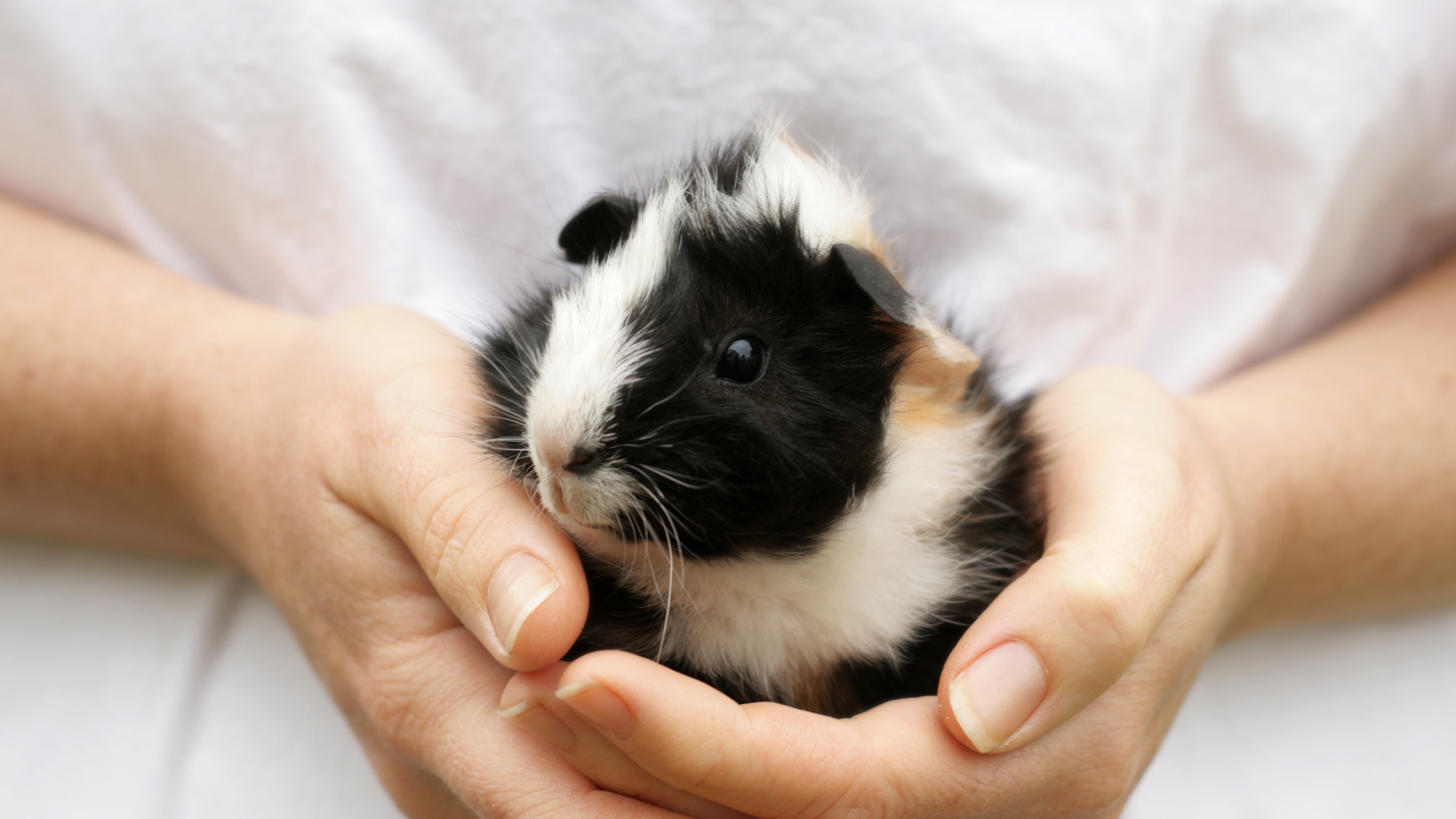
Guinea pigs are rarely aggressive and tend to be easy to handle, especially if they have been well-socialized when young. Always be calm and quiet, and make slow and gentle movements as abrupt gestures can scare them.
Spend time with them, around their enclosure, so that they get used to you before trying to scoop them up. And then handle them gently, with one hand supporting underneath their ribcage, and the other the back end. You can hold them next to your body to give stability – the last thing they need is a person panicking or squeezing them if they wriggle.
12. Careful grooming
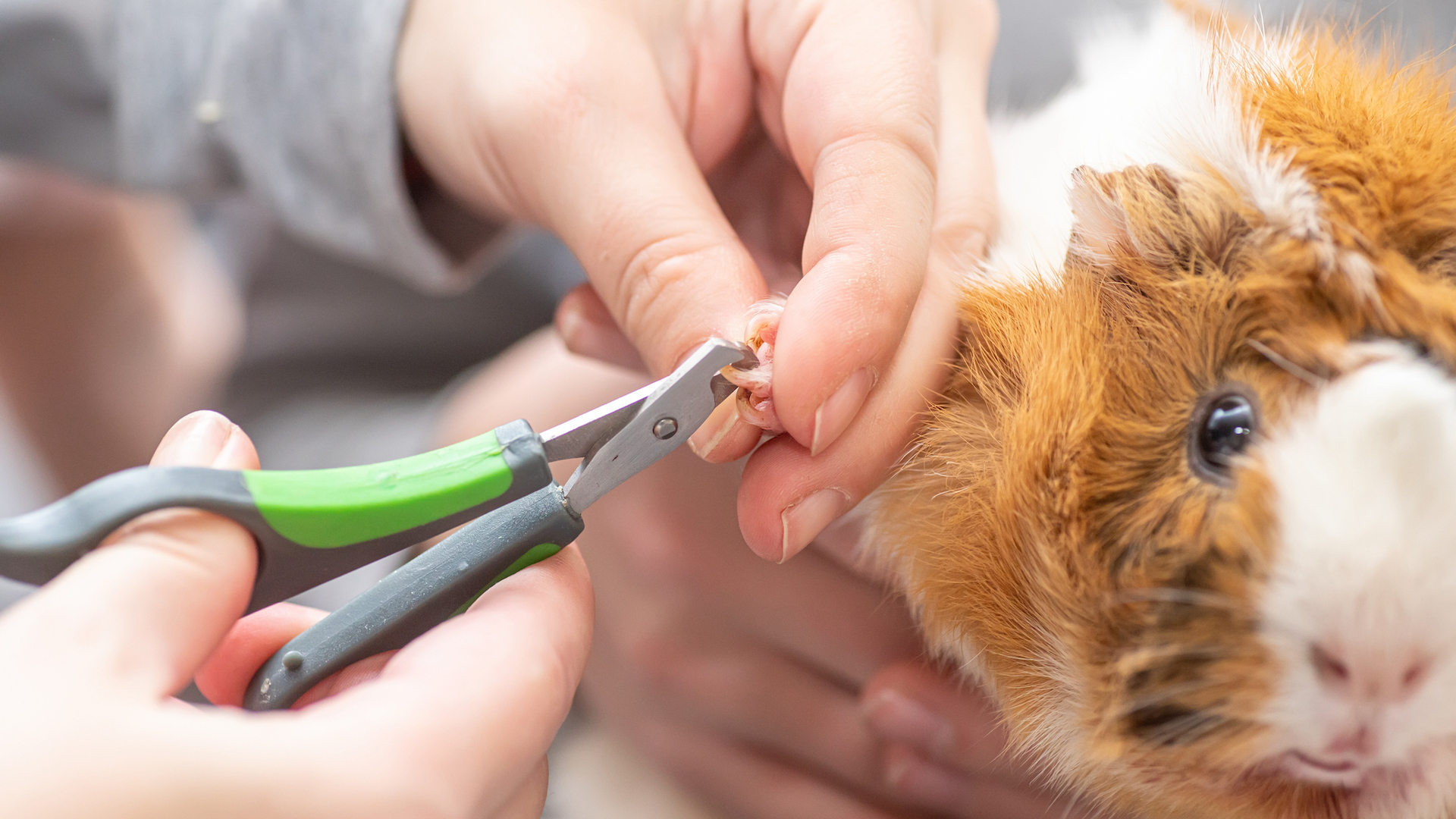
Guinea pigs don’t require a lot of beauty care – they’re handsome enough just as they are – but those with longer hair will need their coats brushed regularly to prevent mats. No baths are required. Even if you don’t need to brush your cavy’s fur, it’s worth inspecting it on a weekly basis to ensure there is none dropping out or any mites or skin conditions that might signal illness.
Their nails, like ours, grow continuously, and many vets recommend weekly clipping so they don’t become uncomfortable.
13. Vaccinations
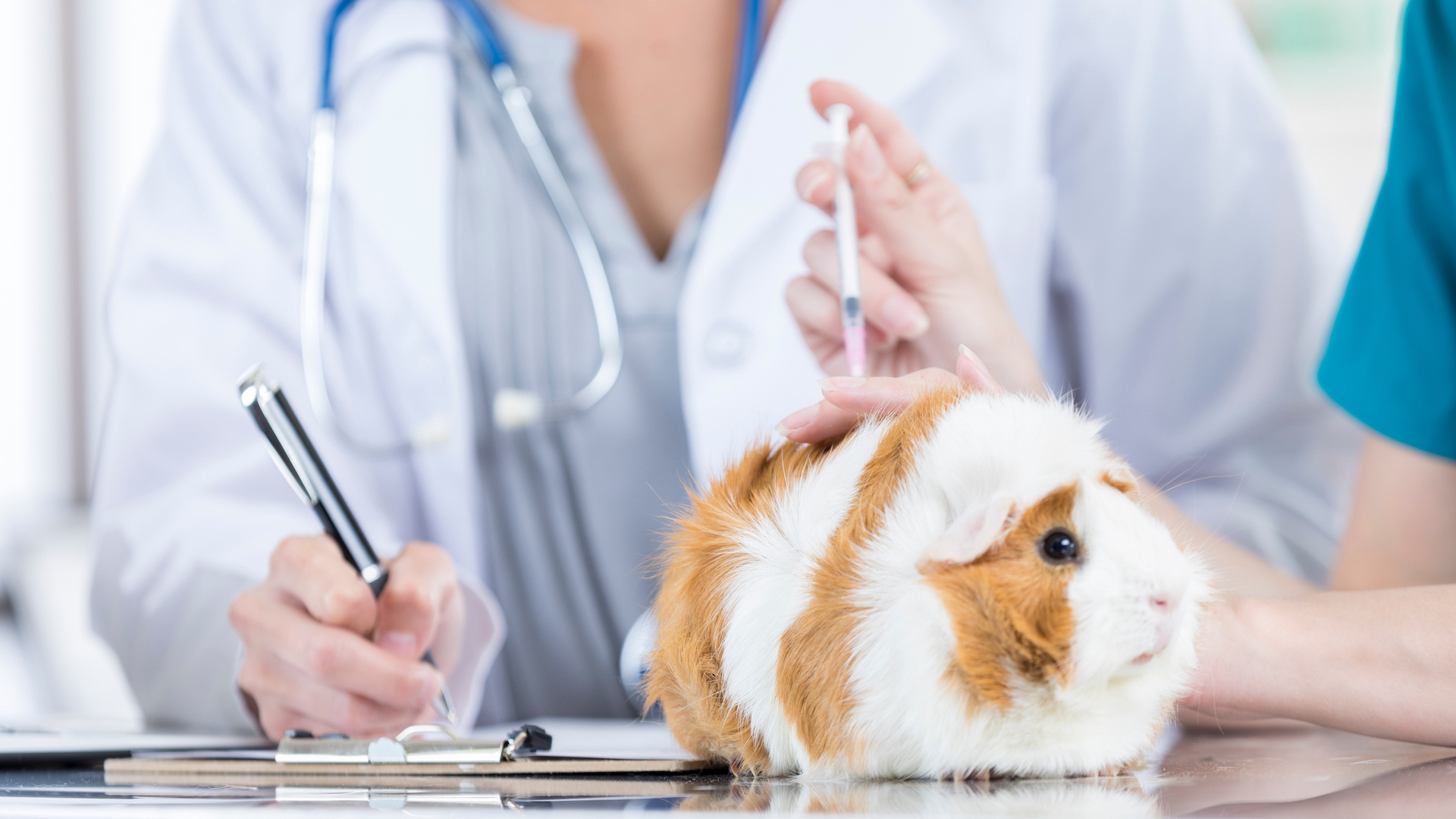
Guinea pigs don’t need routine vaccinations, even if they go to holiday boarding. However, it’s sensible to take them to the vet for regular check-ups, particularly as once they show signs of illness it may be too late.
We recommend investing in some of the best pet insurance to help offset any vet costs.
14. Drinking habits
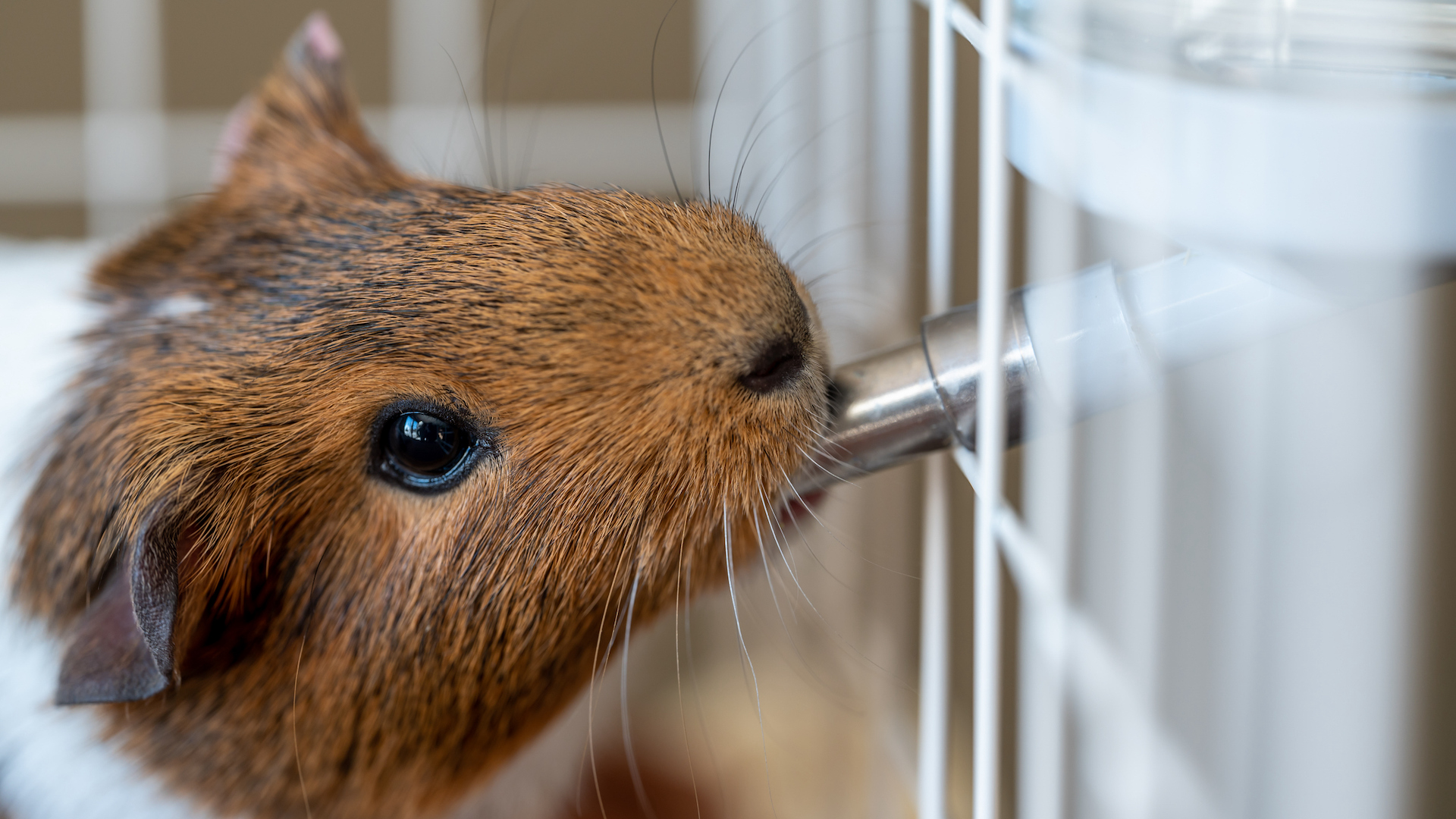
Fresh water should always be available and changed daily. This can be either in a bowl or a gravity bottle. Guinea pigs aren’t the tidiest of animals, and will often defecate or deposit their food in their water bowl, so keep an eye on this.
Some people will add vitamin C to their water, but it degrades quickly and some guinea pigs do not like the flavor.
15. Foraging opportunities
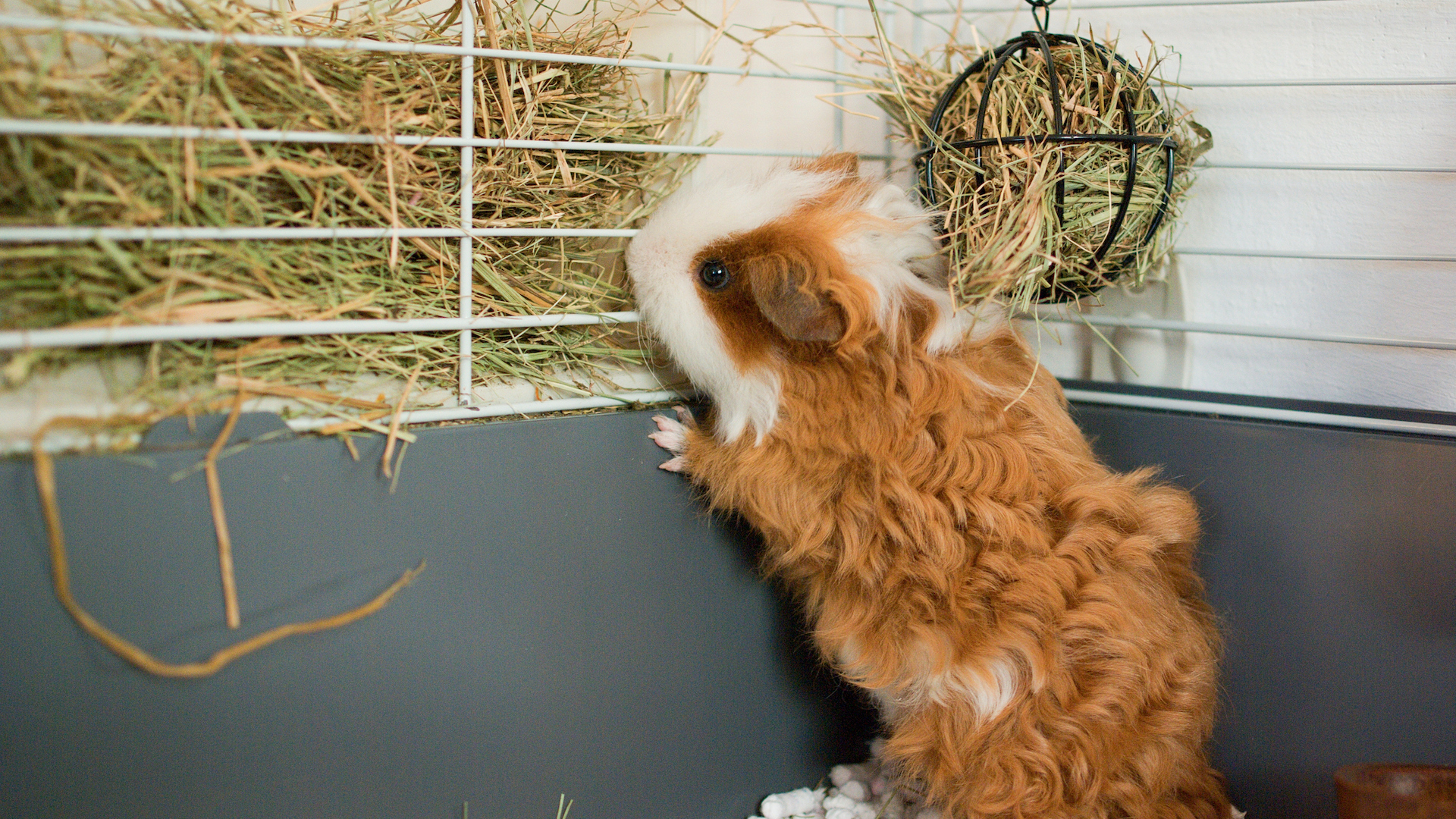
In the wild, guinea pigs would spend most of their waking hours looking for food. The domestic version gets his meals quite literally on a plate, so you need to give him something else to do to stave off boredom.
You can mimic foraging opportunities by hiding chunks of his favorite vegetable in his tunnels or cardboard boxes so he has to find them. Always ensuring an ad-lib supply of grazing, whether it’s hay or grass, is essential.
16. Breeding
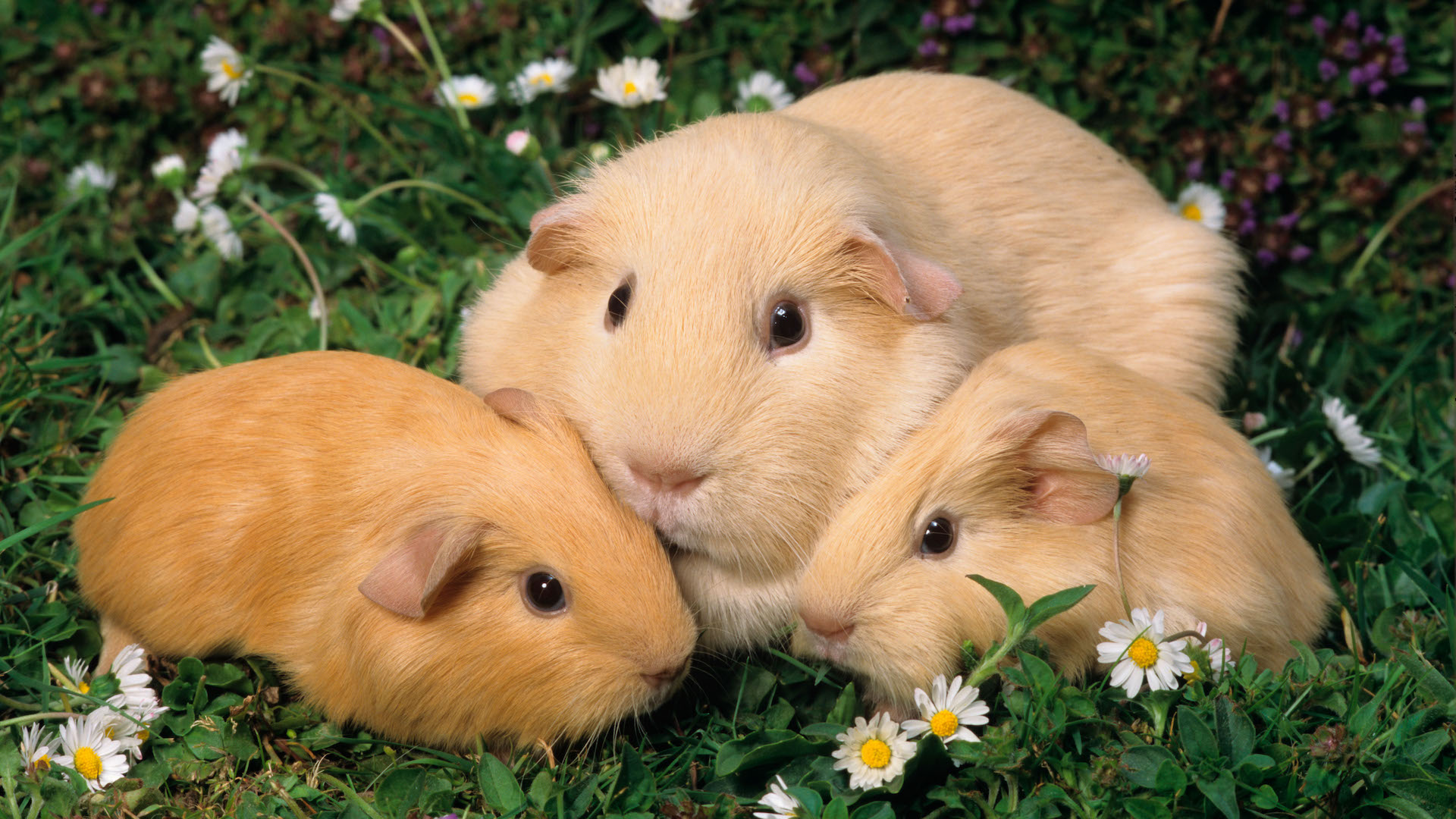
Guinea pigs are sexually mature by about two to three months of age and may be fertile even earlier. This means that when you acquire your guinea pigs, you need to be very sure that they have been kept in same-sex groups from an early age, and that they are the gender the vendor is telling you.
Do not keep un-neutered females and males together unless you are planning to breed – which is best left to experts. Their gestation period is just over two months, and they can have five litters of up to eight pups a year.
17. Creepy-crawlies
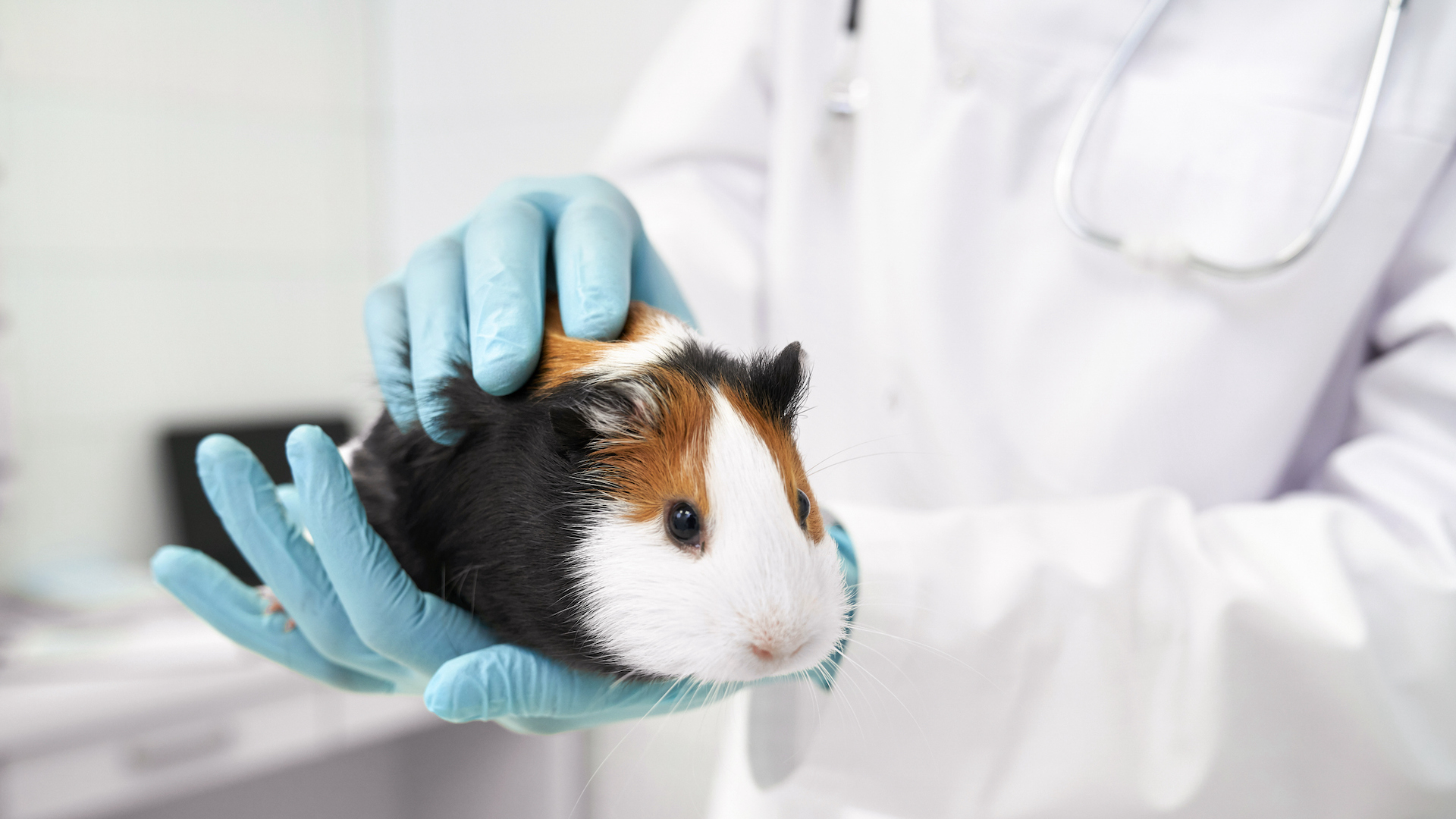
Unfortunately, guinea pigs are susceptible to lice and mites. These can cause severe irritation so that your cavy scratches so much the skin is raw – and can even cause seizures. You will also notice hair loss, and that the guinea pig may become lethargic or lose weight.
If your guinea pig shows any of these signs take them to the vet. There are several medications suitable for guinea pigs that can treat the problem.
It is usually due to contaminated bedding, or contracted from other guinea pigs. Any bedding will need to be removed and the hutch and enclosure thoroughly disinfected.
18. Mixing animals
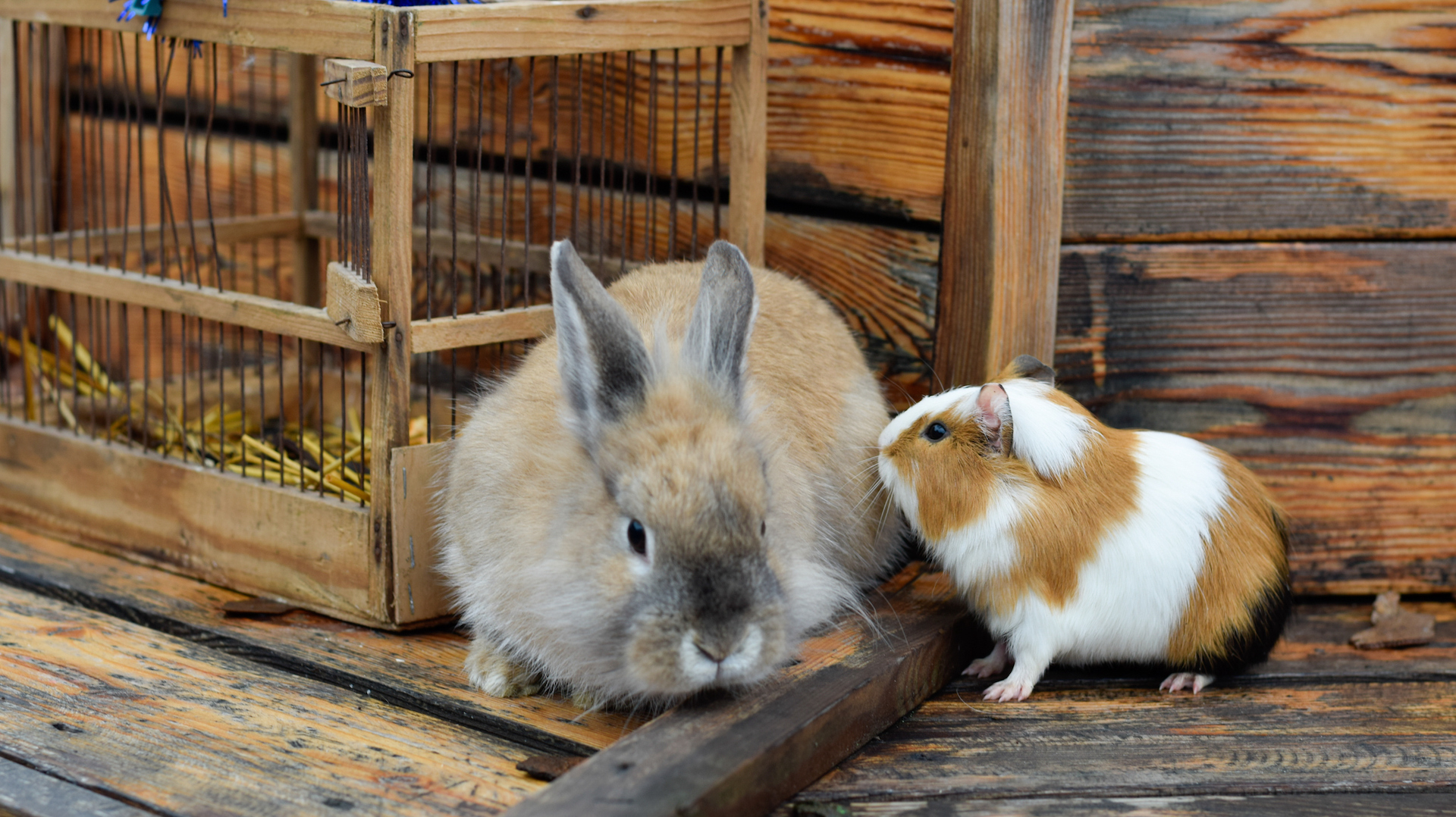
While guinea pigs are sociable creatures who thrive in a communal herd, this should be strictly within their own species. It is fairly common to see rabbits and guinea pigs living together but this is not recommended. Rabbits can carry certain diseases that can be fatal to guinea pigs, and their superior size and strength can mean the guinea pig is bullied or even harmed. Added to this, they have different nutritional needs.
Some cats and dogs can be friendly towards guinea pigs, but this kind of interaction can be very stressful to a prey animal, not to mention potentially dangerous.
19. Likely lifespan
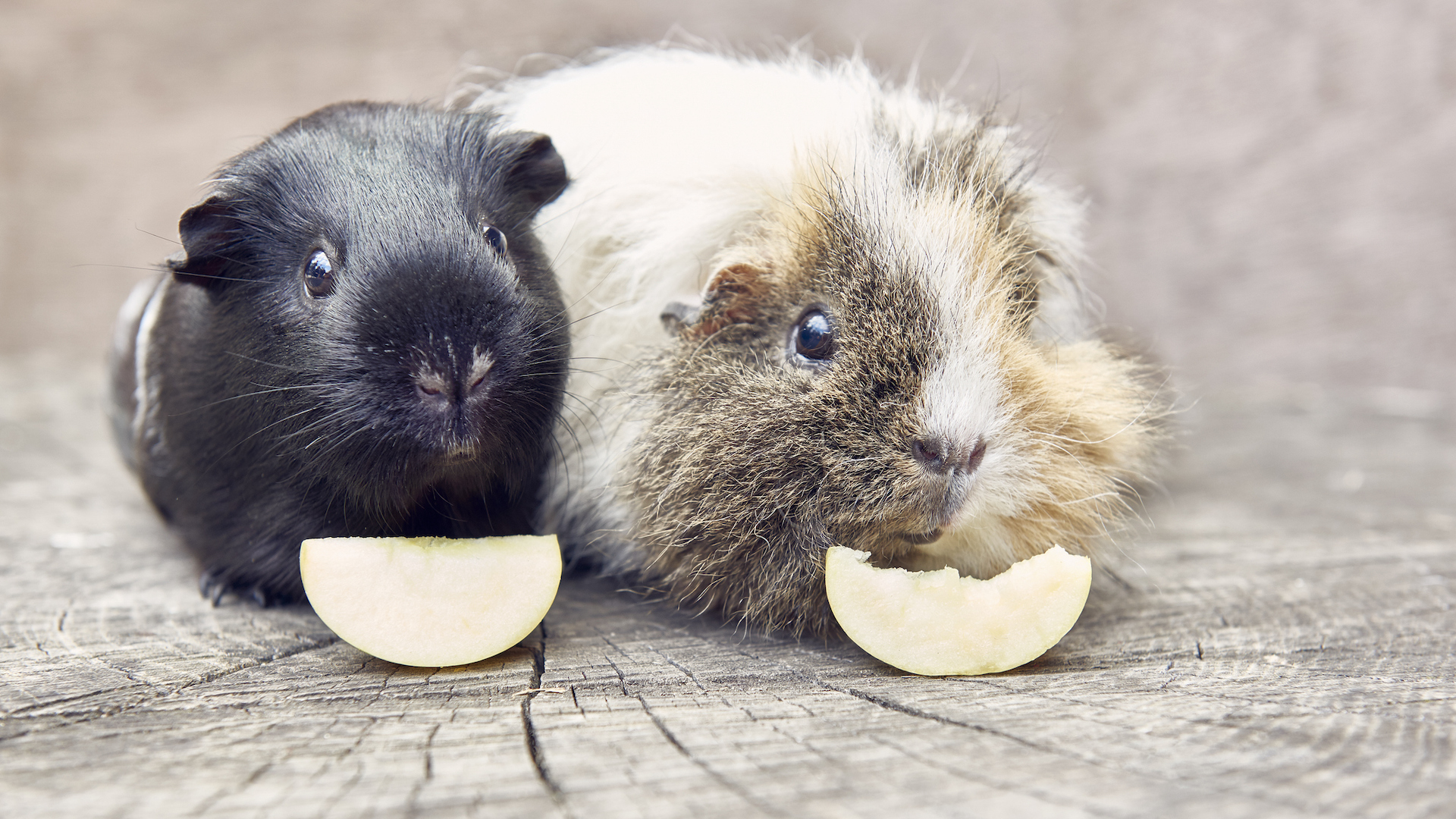
Vets generally estimate that guinea pigs live for around five to seven years, however with excellent care and good health, some live much longer, even up to 10. The oldest known guinea pig lived to 14 years! By the time they are four years old, they are considered senior.
20. Poop eaters
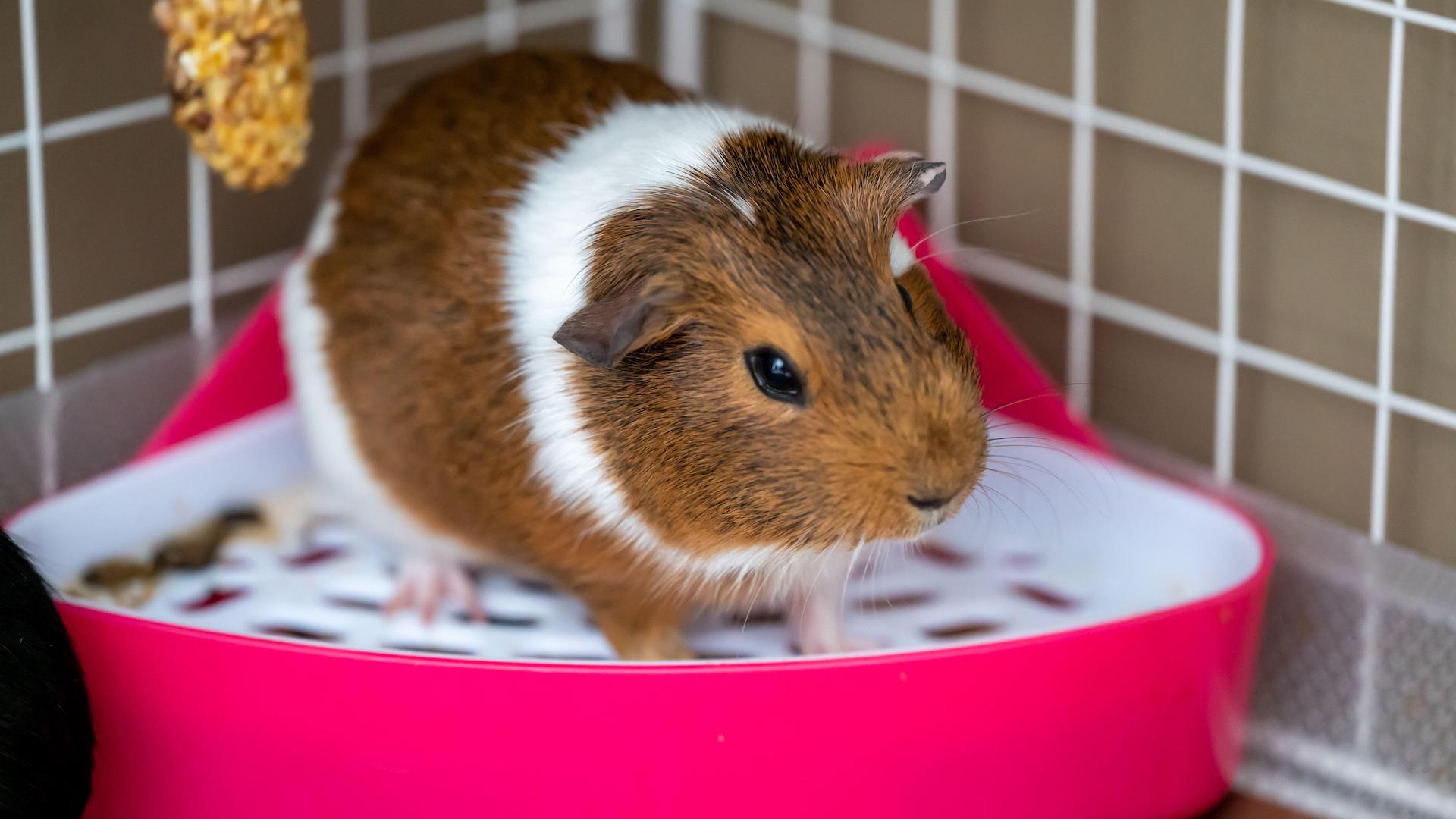
Guinea pigs are cophrophages, meaning they eat poop. This is common with many other herbivores, who digest their food twice. Their first round of poops are soft and called caecotrophs. They will be quickly eaten because they are rich pellets of goodness that deliver a second burst of vitamins and nutrients to the guinea pig.
The drier poops that you clean up from the cage are the second round.
21. How to clean
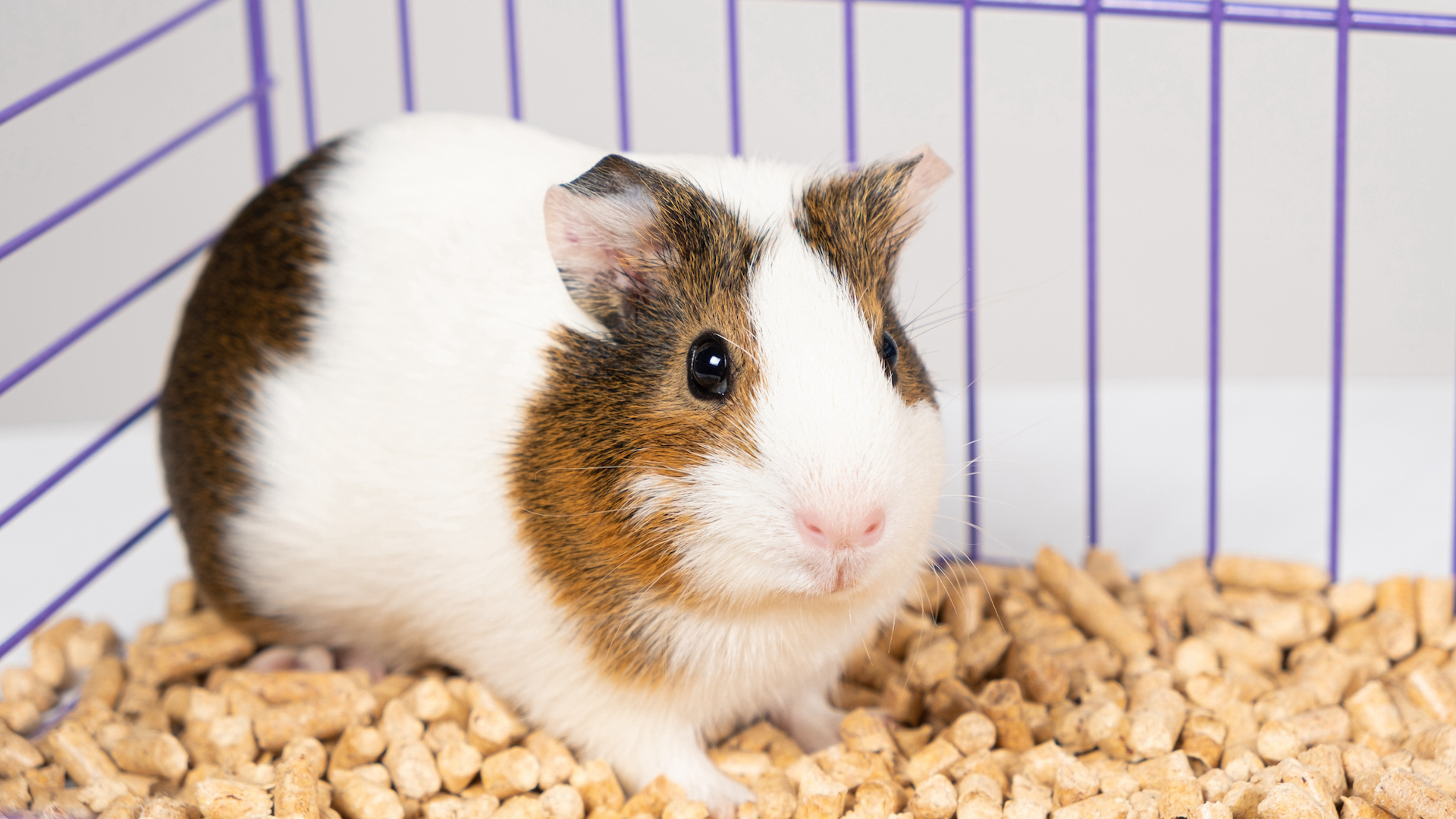
Guinea pigs are messy little creatures. They need daily spot cleaning to remove spoiled bedding and droppings. A thorough cleaning of the cage or hutch should be done on a weekly basis, though if there are multiple cavies, this might need to be done more regularly.
Take the guinea pigs out of their hutch to clean it, and remove all the bedding, including whatever you use as a liner. Sweep out all the straggler bits of bedding and poop pellets. Then, using a pet-friendly disinfectant, spray the whole hutch including the bars, and wipe it down. Leave it to dry before putting in clean lining and bedding.
22. Bedding preferences
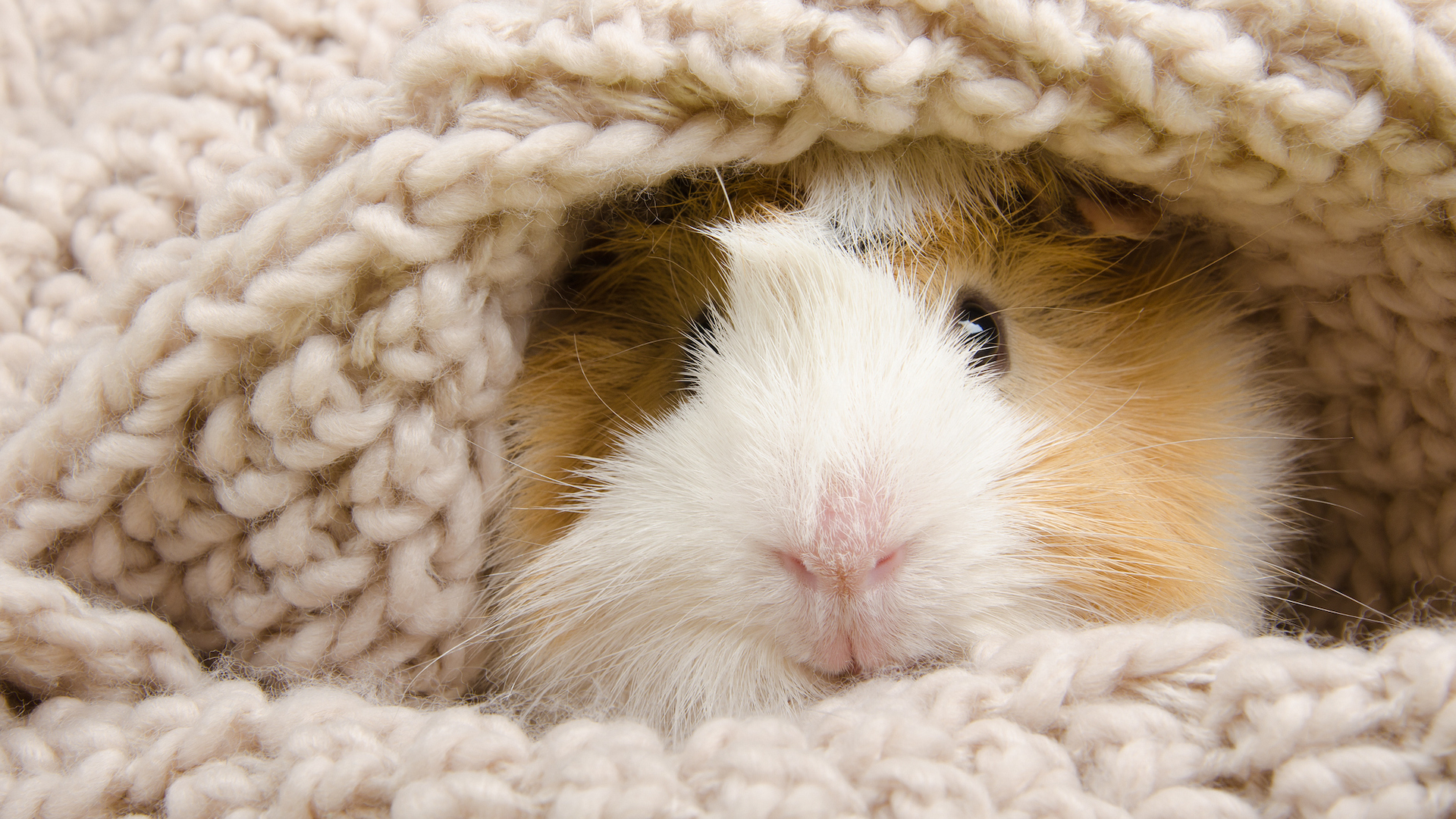
There are several options, but whatever you choose should be comfortable, absorbent, dust-free, and non-toxic.
Many people use fleece cage liners which are absorbent on the top and have a water-repellent base, so the hutch stays dry and clean. These are expensive but can be washed and reused infinitely so can be cost-effective long-term. A towel is a cheaper option, but they don’t tend to be as absorbent.
If you want to use wood, it should be shavings and not sawdust as the latter is too dusty. Dust-free shavings or hemp bedding are recommended. Fluffy stuffing-type bedding can cause injury if it wraps around one of their delicate limbs. Pet-safe paper bedding can be good, but avoid anything with ink or dye, which could be toxic.
Hay is typically recommended as an ideal topper bedding because it’s soft, edible, and good for burrowing and enrichment.
23. Ideal temperature
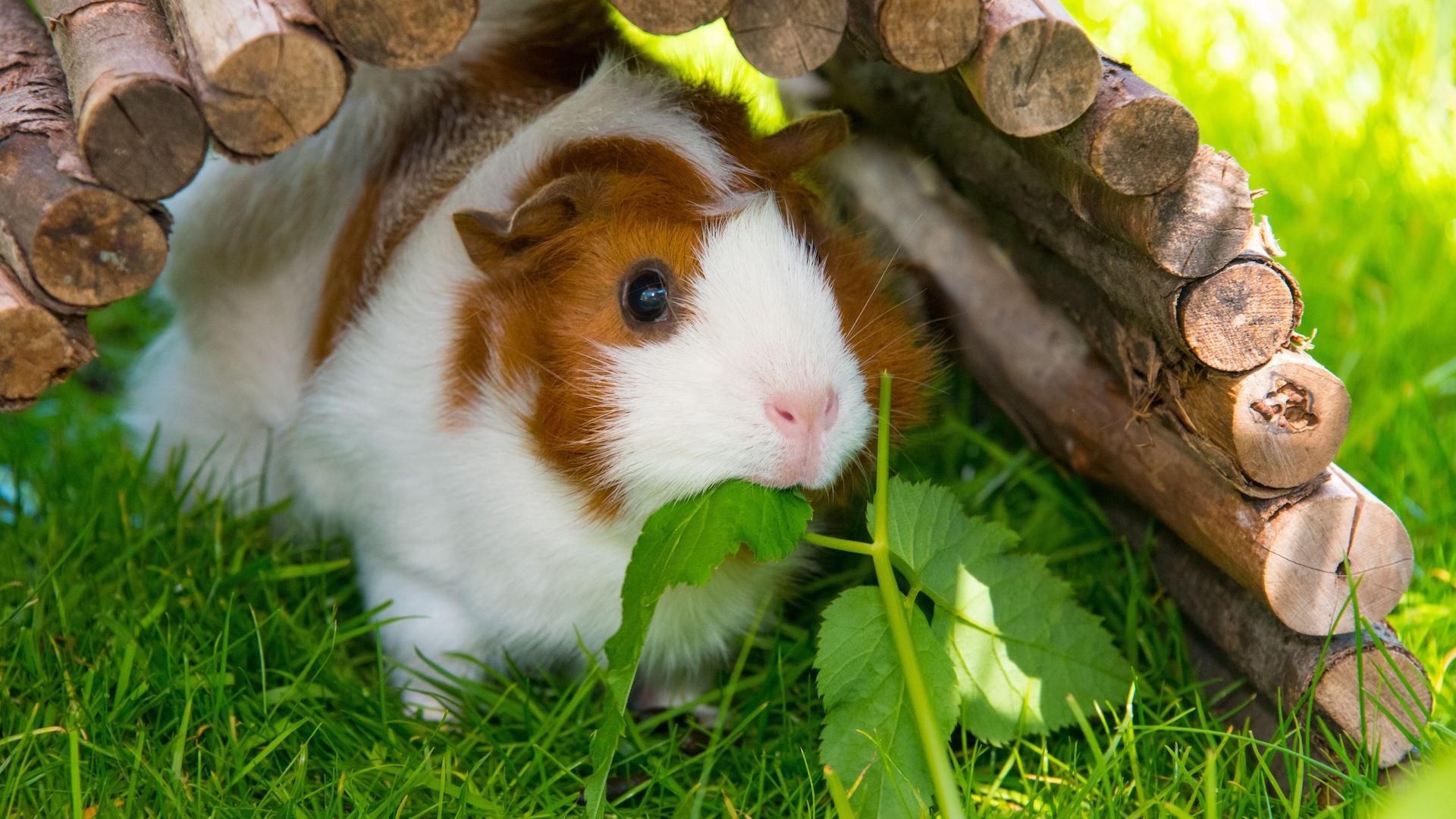
Guinea pigs are delicate animals and do not tolerate either heat or humidity well. They can get heatstroke if they get too hot, so make sure they are not in temperatures over 80ºF. Always make sure, if they are outside, that they can access shade.
With their low-slung bodies and short legs, they don’t like damp, so should be kept inside if it gets cold and wet, too.
Their ideal temperature range is fairly narrow, between 60–80ºF, so may need to be indoors if you cannot guarantee they will not experience extremes outdoors.
24. Abundant hay or grass
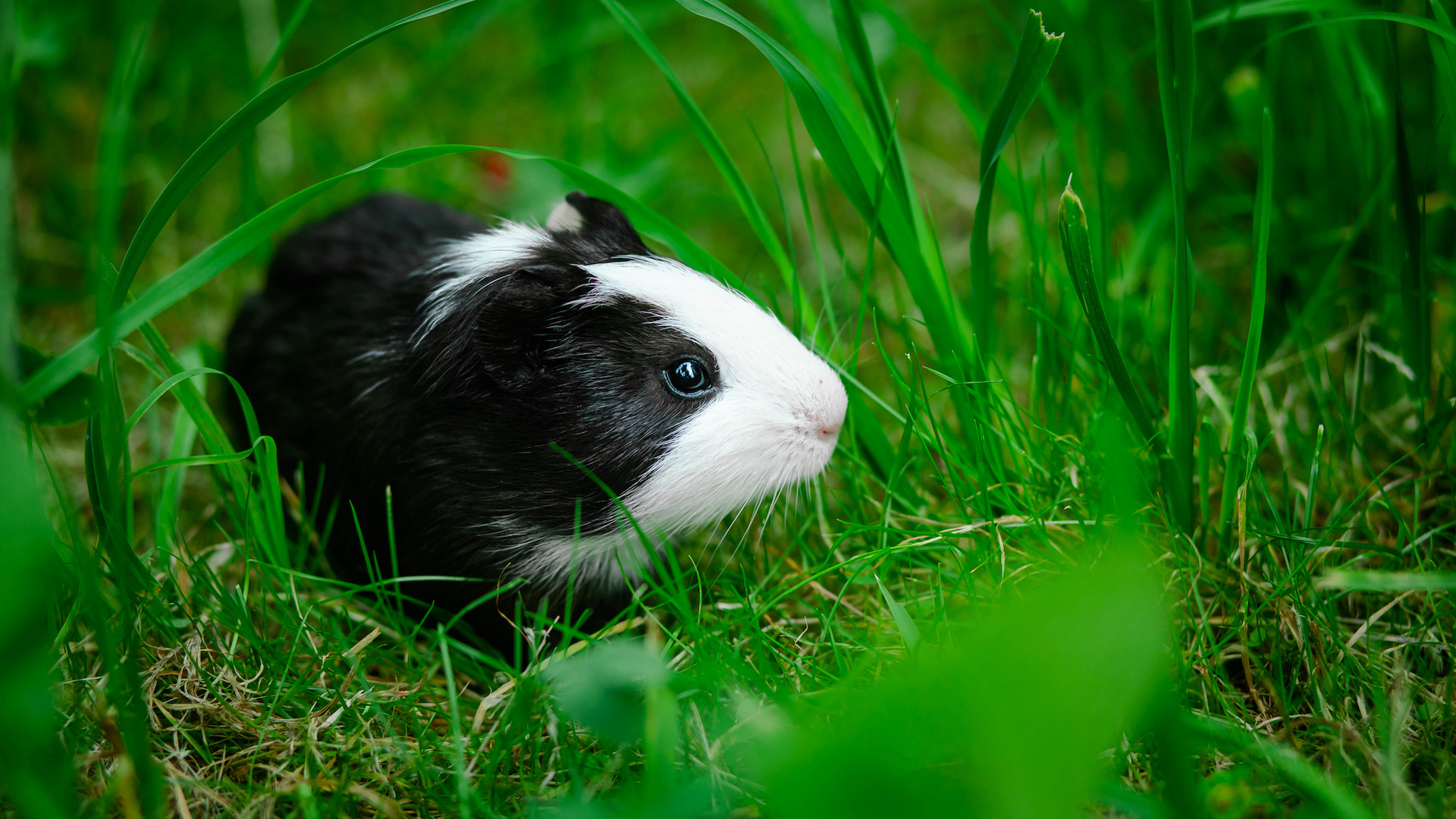
Foraging is of primary importance to these herbivores, for their digestion, teeth, and wellbeing. It should make up around 80% of their diet, either in the form of grass or hay. Practically speaking, most guinea pigs will have hay as their primary forage – think of feeding at least their own body size in volume each day.
But be mindful of the kind of hay you buy – Timothy, rye grass, orchard grass or meadow hay is good, but alfalfa and clover can lead to obesity. And of course, check your source to ensure there are no poisonous plants within.
If you use hay as bedding, make sure they have a separate source for eating as they around bound to poop and wee in their beds.
25. Vitamin C
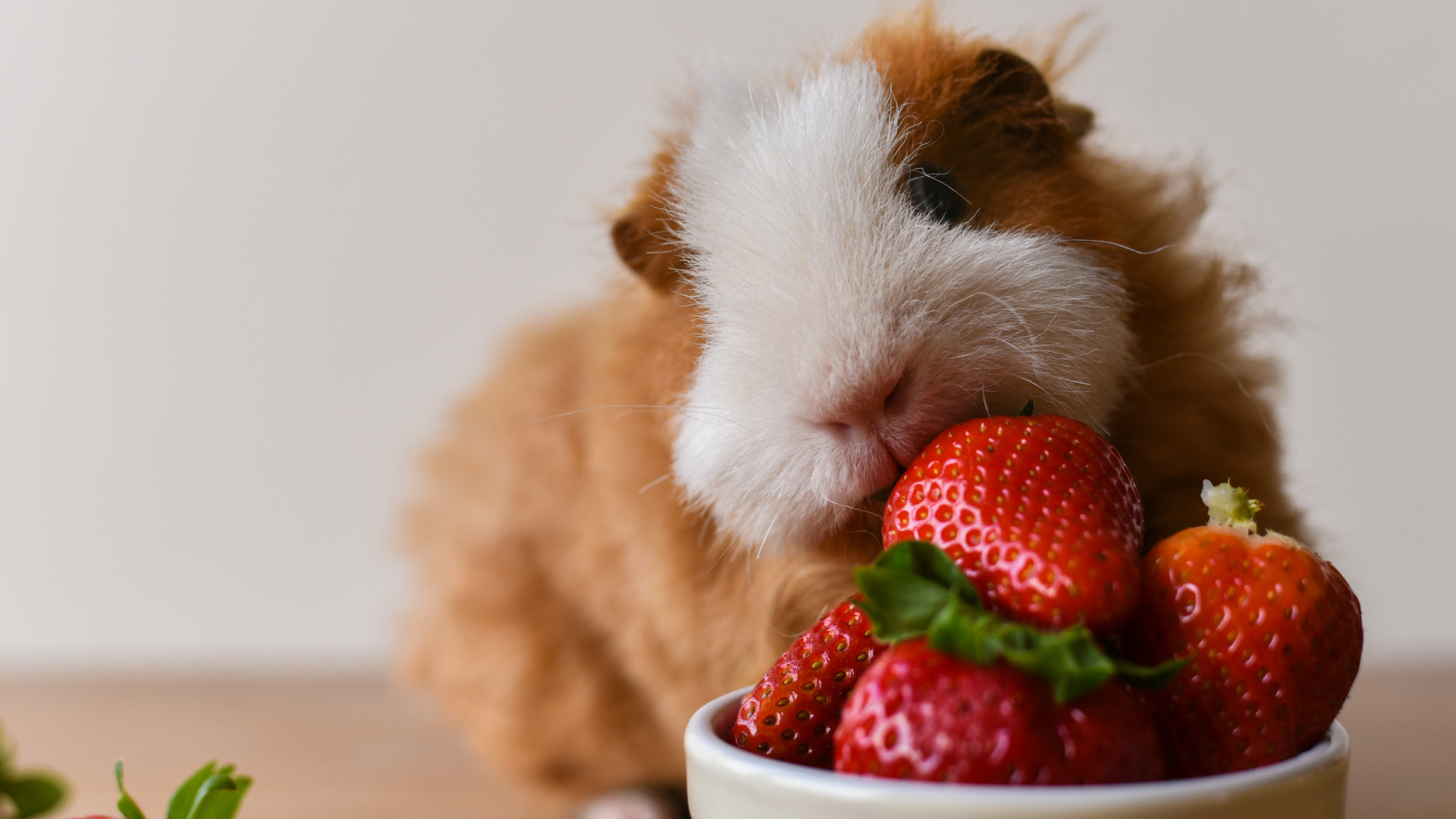
Guinea pigs, unlike most mammals, are unable to synthesize vitamin C themselves and so must obtain it from what they eat. A lack of vitamin C can cause major health problems, chiefly scurvy which has a range of symptoms, from lethargy to dental problems and joint pain.
Cavies need around 10–20mg per day. Commercial pet food is usually fortified with vitamin C. It is also found in vegetables such a peppers, leafy greens, and broccoli florets. Some owners add it to the drinking water, but as it degrades quickly and as some do not like the taste, this is not recommended.
26. Go sparing on treats
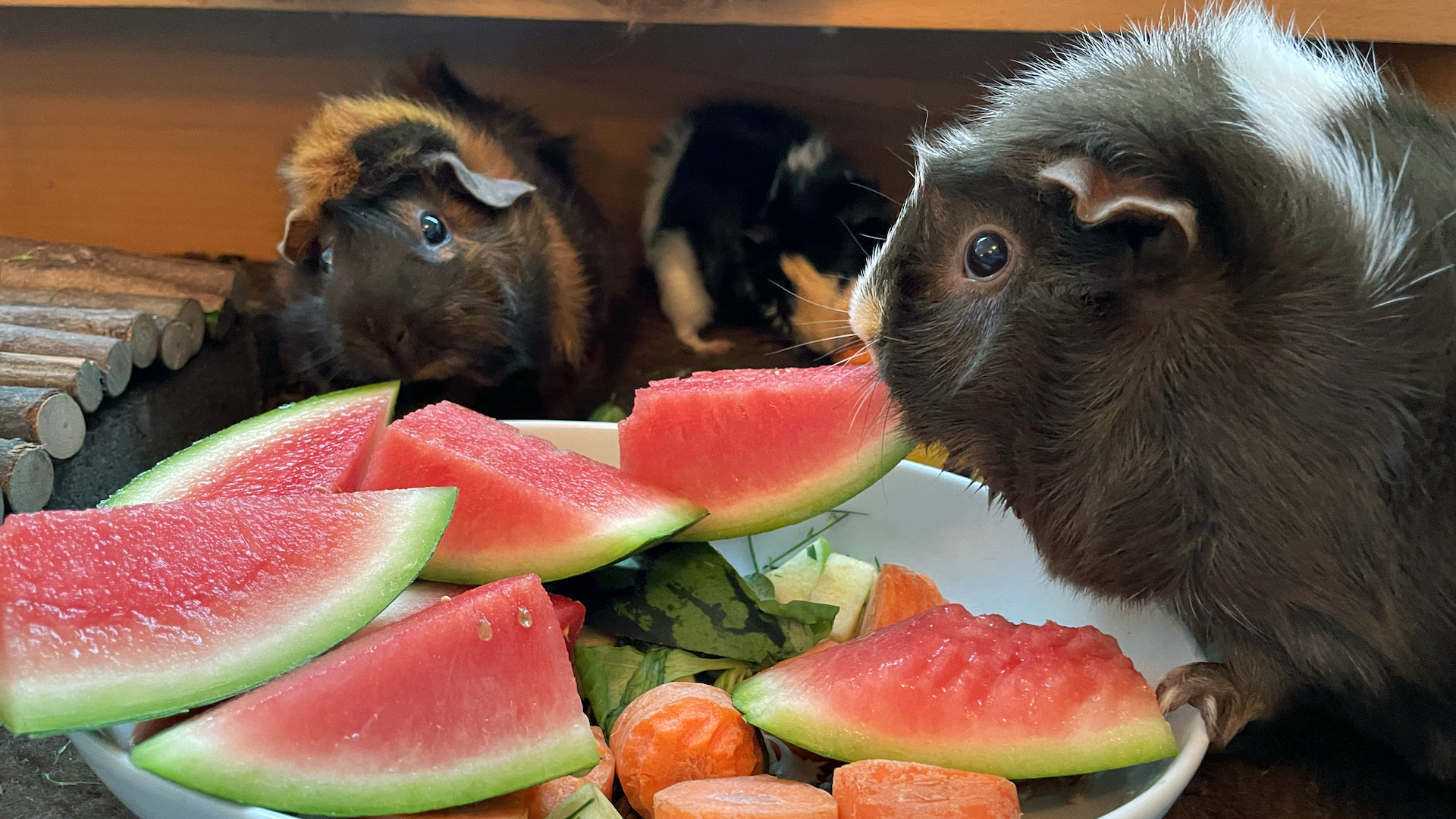
Guinea pigs thrive on grass and hay, and while they will enjoy chunks of vegetables, these should not be the mainstay of their diet. A teacup of greens and vegetables, per day, is sufficient.
For treats, you can offer fresh fruit in very small amounts because it is high in sugar and can cause obesity. Fruits they typically enjoy include apple, melon and strawberry.
As a general rule, bought treats tend to be high in sugar, so choose very wisely and think about reducing their pellet ration accordingly if you want to give a commercial treat.
27. Taming tips
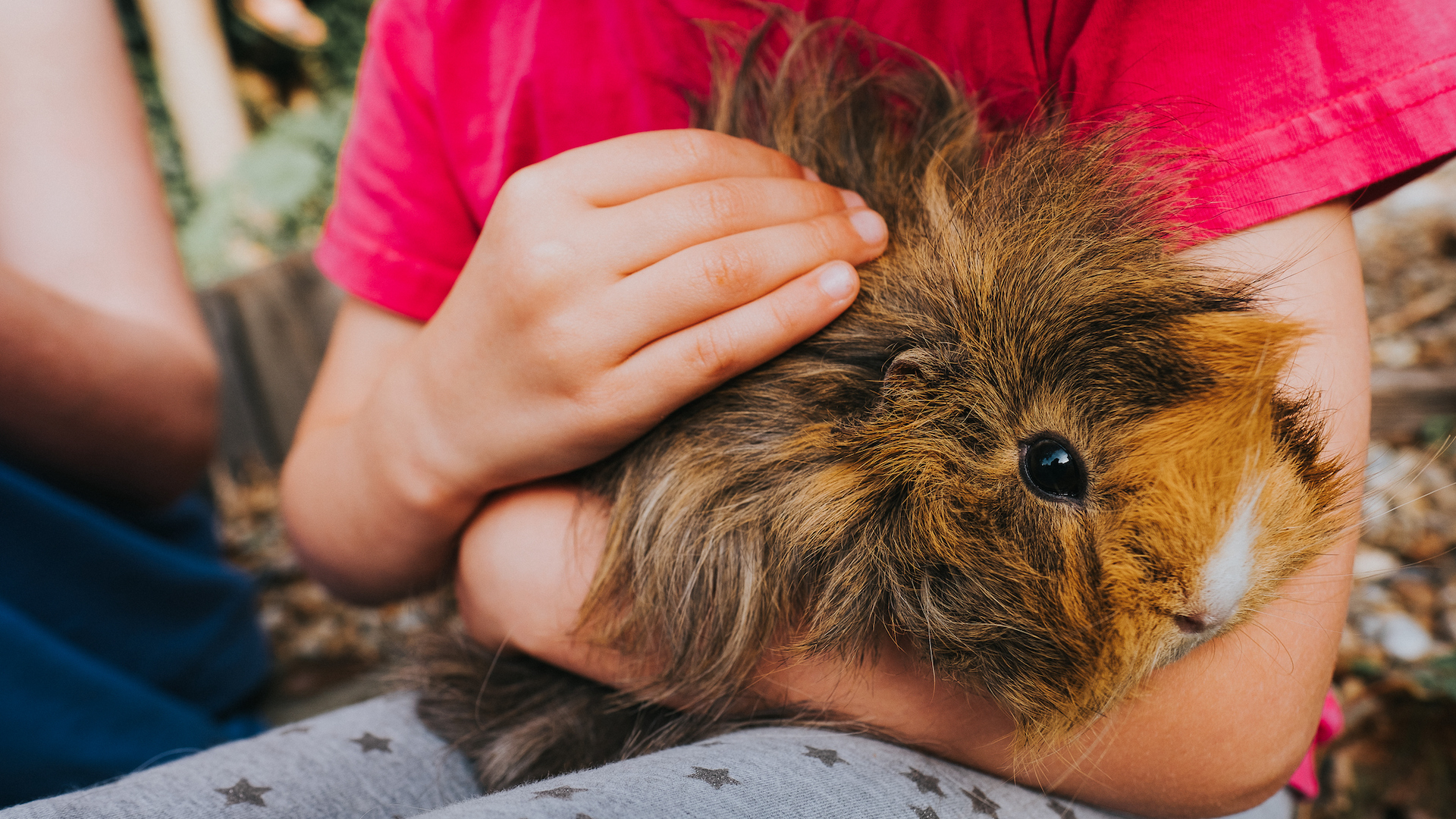
As guinea pigs are prey animals, they can be timid, but really they love attention. To make friends with them, spend time with them, talking softly and handling them gently. Don’t rush the process, especially if they have not been well socialized before coming to your home, and allow them to settle in.
The way to a guinea pig’s heart is often through his stomach, so offer tasty morsels and you’ll soon have them literally eating out of your hand.
28. Beautiful bonding
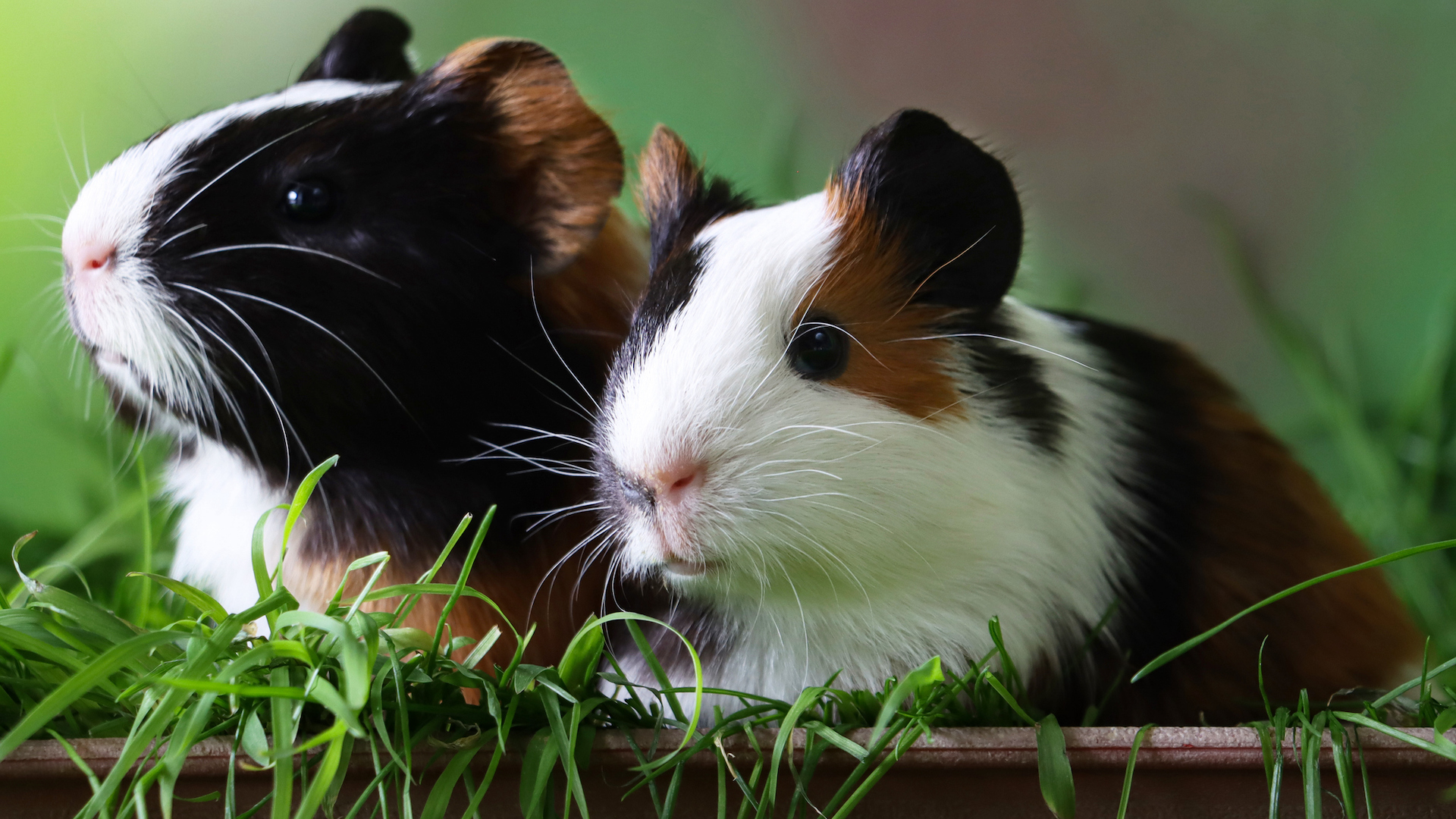
Guinea pigs need company of their own kind, but they don’t always love the companion you have chosen for them. If you have three guinea pigs or more, it’s a more peaceful domestic situation in the enclosure if there is only one male – this is how they tend to live in the wild.
Choose their companion wisely. An old guinea pig may find a rambunctious new partner a bit of a pain. Or a dominant one might be better off with a more compliant companion than meeting his match.
Before attempting bonding, it’s best to have two hutches alongside each other so they can see without touching, and gradually move them closer together. Swap bits of their bedding around so they get used to each other’s smell.
When they first meet face to face, this should be done on neutral territory so they don’t get protective over their home. Supervise them and watch out for any negative behavior. Gradually increase the time they spend together.
If you have any concerns at any point, go back a few steps in the process and take your time.
29. Sleep patterns
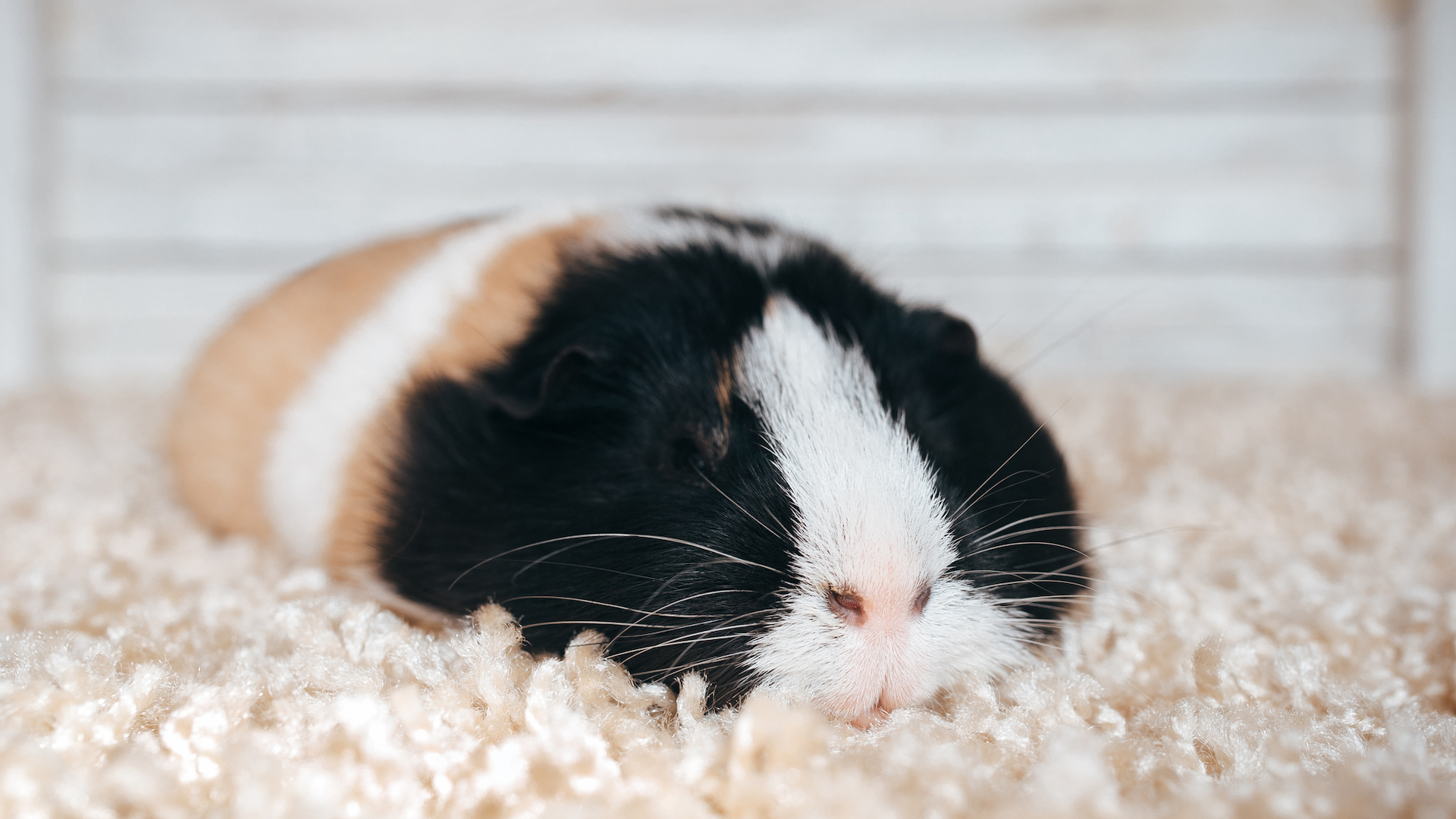
Do guinea pigs sleep? The answer is not a lot – maybe four to six hours per day in naps, sometimes only for a couple of minutes at once. This is likely due to being a prey animal, they have to be alert to any dangers – even if in the domestic environment the threats are minimal.
30. Outdoors or in?
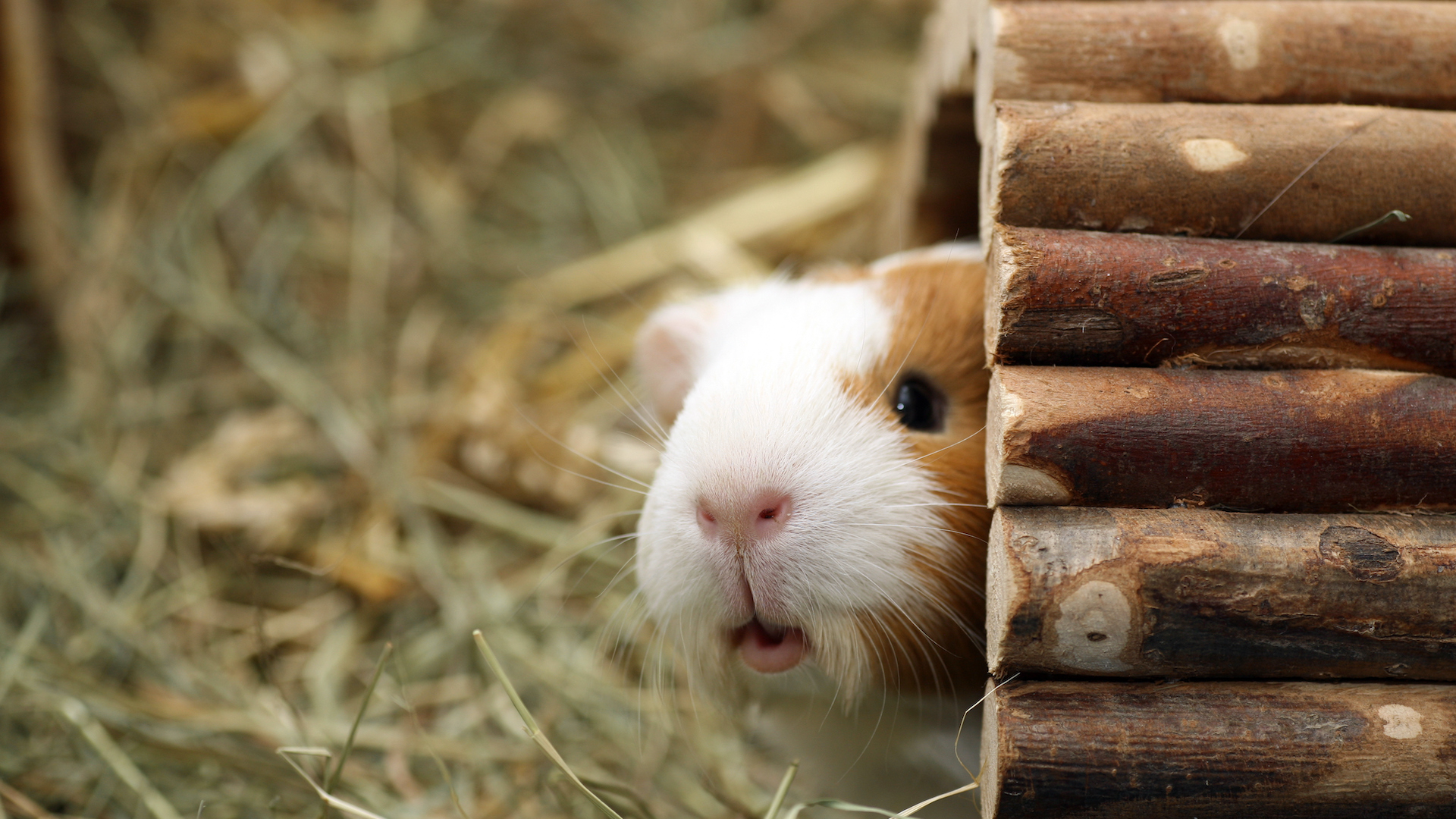
Guinea pigs can live either inside or out, depending on the weather in your location. There are pros and cons to both, and some people end up giving them some outside time, with their permanent enclosure indoors. Others vary according to the season.
Guinea pigs do not tolerate extremes of temperature. They hate being cold or damp as much as they are prone to heatstroke. For this reason, indoors is the more predictable option, but it offers them less in a way of stimulation.
Another concern outdoors is the threat of predators and the guinea pigs’ sense of vulnerability in a wide open space. So always provide a safe shelter, both from the fox, and strong sun or rain.
31. Poisonous plants
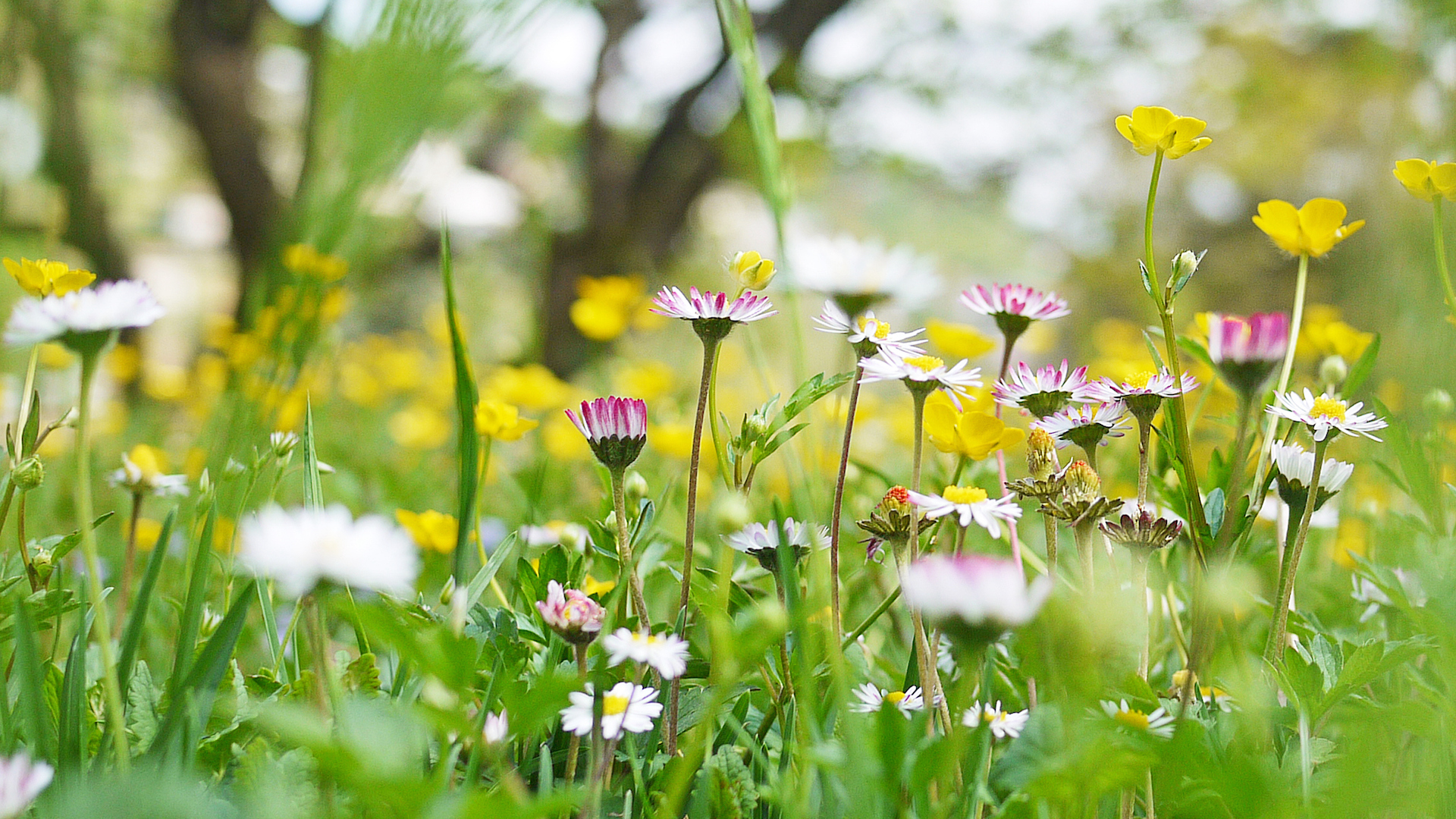
Guinea pigs love to forage, but unfortunately, not all garden plants are safe for them to eat. Always make sure that their enclosure, if outdoors, is on plain grass, and check for poisonous plants. Likewise, poisonous plants can turn up in hay, so acquire it from a reputable source.
Some common garden plants that are poisonous include bluebells, daisies, buttercups, dock leaves, and sorrel.
32. Predator danger
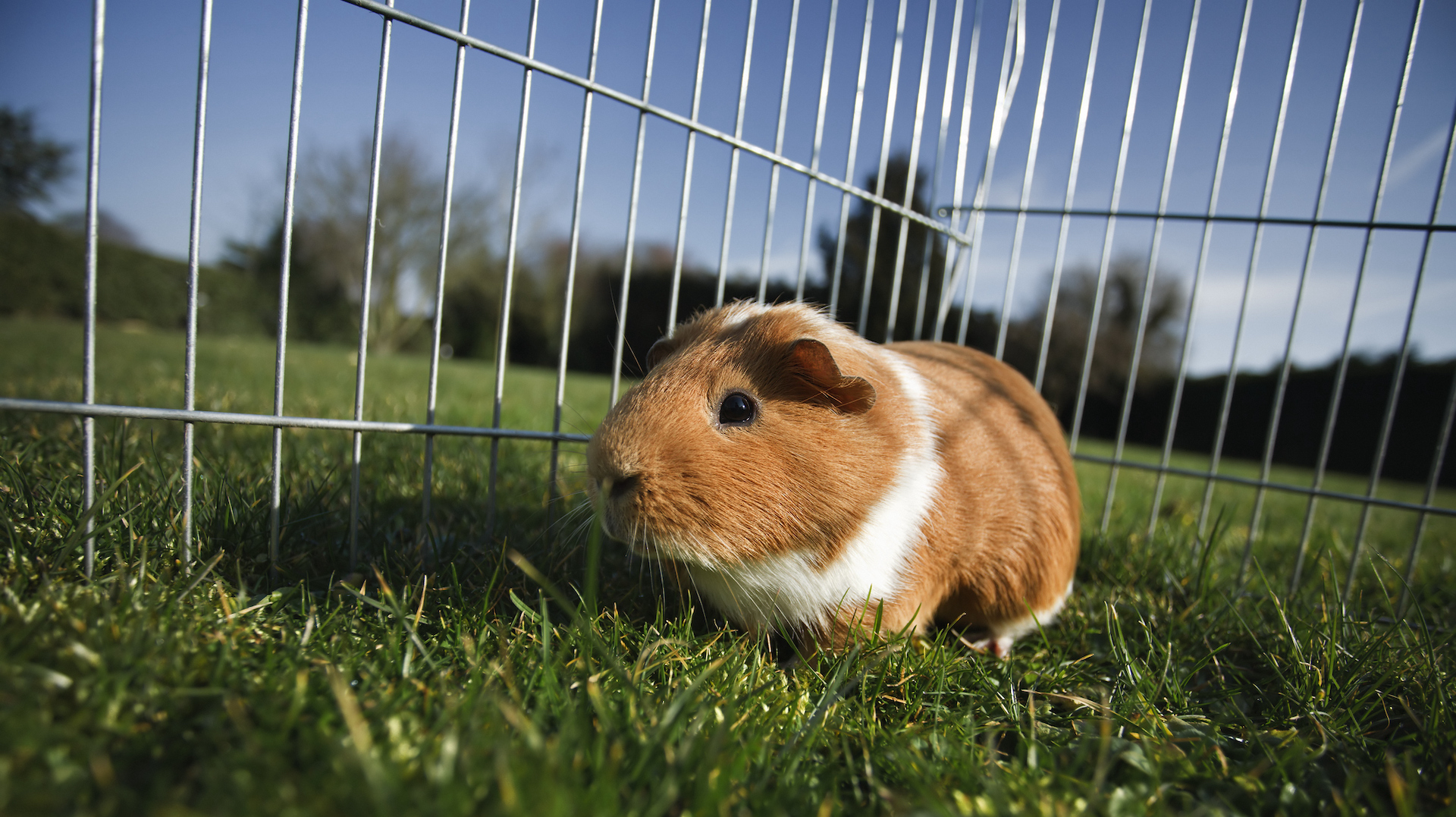
Guinea pigs have no way of defending themselves if a predator jumps into their cage. They have short legs, cannot run fast, nor can they really fight and bite. They have many natural enemies, including foxes, coyotes, snakes, hawks, and owls – or even pet dogs and cats. For this reason, a covered outdoor enclosure with plenty of hideaways is highly advised, unless you are in the garden supervising, and shut them in a predator-proof hutch during the night.







